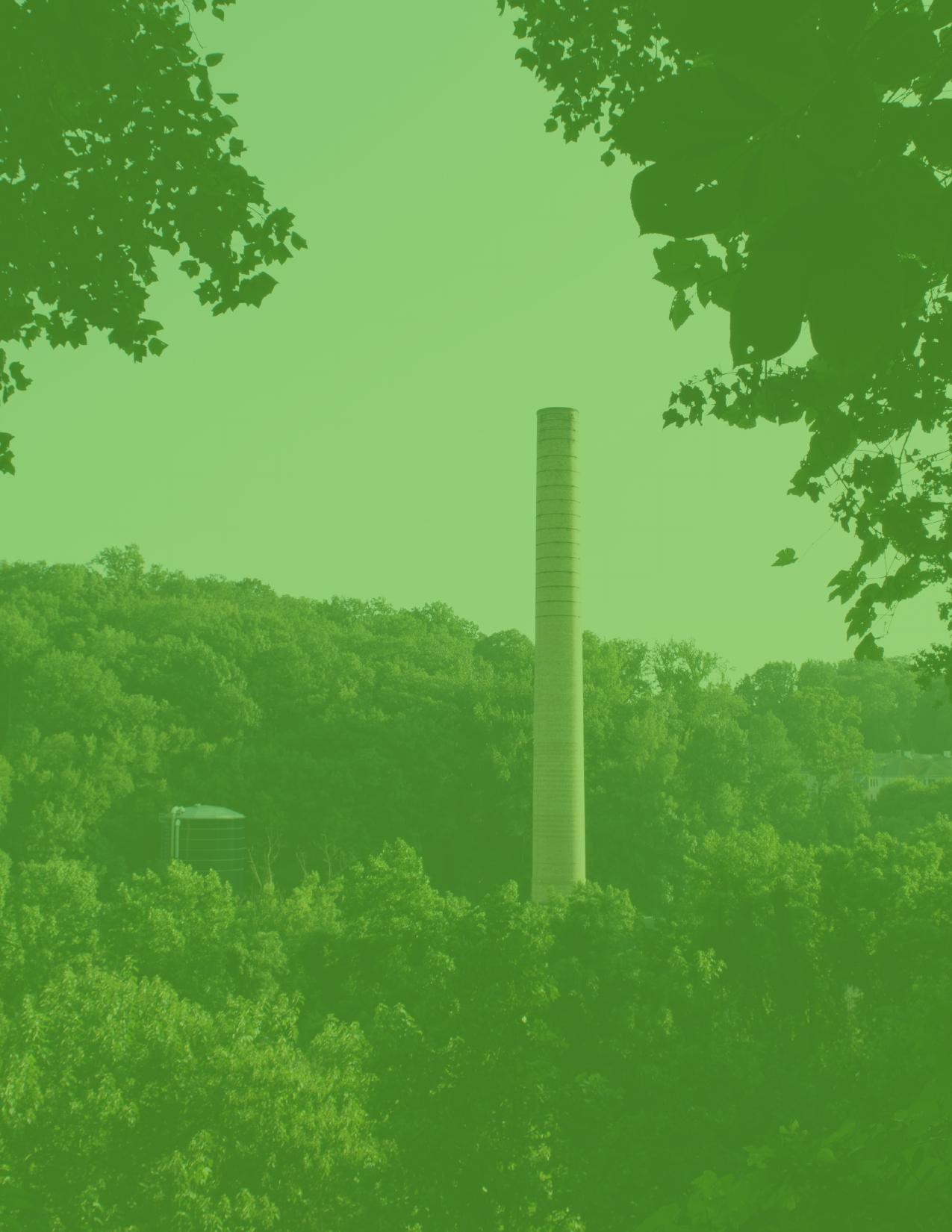CCNTANNUALREPORT2022CLOSINGTHEEMISSIONSGAPTHROUGHSUBNATIONALCLIMATEACTIONSINCHINAFEBRUARY2023ReportFebruary20231Disclaimer:�ThisreportrepresentstheviewsoftheauthorsonlyandcannotbeconsideredtoreflecttheviewsorpositionofiGDP.Pleasecontactusifyouhaveanyquestions.ThecontentofthisreportisbasedontheCCNTdatabase,publiclyavailableinformationandothervetteddataandaimstofacilitatediscussion.TheCCNTdatabaseassemblespolicydocumentsfromthefollowingpubliclyaccessiblesources:•Governmentdocuments:•China'sNationallyDeterminedContribution•China'sannualreportonclimatechangepoliciesandactions•�Economicandsocialdevelopmentplans,suchasthe13thFive-YearPlanandrelatedspecialplansforkeysectors,suchasenergy,transportation,industry,etc.•Provincialandmunicipalcarbonpeakingactionplansandurbanlow-carbondevelopmentplans•National,provincialandmunicipalgovernmentwebsitesSuggestedcitation:�CCNTteam.(2022).CCNTAnnualReport2022:ClosingtheemissionsgapthroughsubnationalclimateactionsinChina.Beijing.innovativeGreenDevelopmentProgram.EXECUTIVESUMMARY........................................................................................................................................................�21.“1+N”CLIMATEPOLICYFRAMEWORK...........................................................................................................................�82.PROVINCIALDIVERSITYANDDECOUPLINGPROGRESS...............................................................................................�153.PROVINCIALMITIGATIONPERFORMANCE(2015-2020)...............................................................................................�224.CLIMATEACTIONSTOWARDS2025................................................................................................................................�305.GAPTOWARDSCARBONNEUTRALITY.........................................................................................................................�40APPENDIX1...........................................................................................................................................................................�43APPENDIX2..........................................................................................................................................................................�44APPENDIX3..........................................................................................................................................................................�45CONTENTS2CLOSINGTHEEMISSIONSGAPTHROUGHSUBNATIONALCLIMATEACTIONSINCHINAEXECUTIVESUMMARYPhotobyBrianGarrityonUnsplashReportFebruary20233EXECUTIVESUMMARYChinaisstrivingtoimplementitsclimatepledgeofpeakingcarbonemissionsbefore2030andachievingcarbonneutralityby2060,theso-called“dual-carbongoals”.Todeliveronitspledge,Chinahasestablishedan“1+N”policyframework1,withinwhichChina’sprovincesaretaskedwithdesigningandimplementingclimateactions.Assuch,achievingChina’sclimatepledgewilldependtoalargeextentonpolicyimplementationwithrobustclimateactionsatthesubnationallevel.ThisreportprovidesanoverviewofsubnationalclimateactionsinChina’sprovincialregions.ItdrawsoninformationfromChinaCarbonNeutralityTracker(CCNT),aclimateactiondatabasemaintainedbyinnovativeGreenDevelopmentProgram.Usingamulti-dimensionalframework[Box1],thereportaimsto(1)understandcarbonemissiontrendsandmitigationprogressineachprovincialregion,(2)trackhoweachprovincialregionisimplementingthenation’sdual-carbongoals,(3)assessregionalimplementationcapacitybymeasuringhowsubnationalenergyandclimategoalswereimplementedbetween2015-2020,(4)determinewhetherthepoliciescurrentlyinplacewillbesufficienttoachievesubnationaldual-carbongoals,and(5)identifygapsandopportunitiestoenhancesubnationalclimateactions.ACTIONPROGRESSChina’sprovincialregionsarehighlydiverse,varyingintermsofeconomicdevelopment,energymixandresourceendowment2.ThepercapitaGDPofChina’sprovincialregionsrangesfromthelevelofNamibia(Gansu)toPortugal3(Shanghai&Beijing).Eachprovincialregionalsohashugemitigationpotential.In2019,thetotalemissionsofShandongprovince,thesecondlargestemitteramongallprovinces,weretwiceashighasGermany’s.Infact,over10provincialregionsemittedmoreCO24thantheUnitedKingdomthatyear.Thisregionaldiversityleadstovariationinclimatemitigationpriorities.ItalsoposesachallengetoresearchersandpolicymakerswhohopetomakesenseofthemyriadactionsthatChinaistakingonthegroundtoadvanceitsclimategoals.Thisreportaimstosystemicallytracktheseactions.Thekeytakewaysinclude:One-thirdofChina’sprovincialregionshavealreadyachieveddecouplingofcarbonemissionsandGDPgrowthMostprovincialregions,containingthemajorityofChina’spopulation,arestillatanupper-middle-incomeeconomiclevel,withpercapitaenergy-relatedcarbonemissionsthatarestillgrowing[Figure10].Withonlyafewexceptions,mostofChina’sprovincialregionsstillrelyonfossilfuelenergy.Percapitaenergy-relatedcarbonemissionsinhalfofChina’sprovincialregionswerebelowsixtonsofCO2in2020.Thecarbonintensitylevelsofthethreeprovincialregionsatthetopareoverthreetimesthelevelsoftheseventeenprovincialregionsatthelowend[Figure7].However,one-thirdofChina’sprovincialregionshaveseencleardecouplingofcarbonemissionsandGDPgrowth.Thatis,totaleconomicgrowthhasbeenachievedwhiletotalcarbonemissionshaveremainedstableor1.ChinaClimateChangePolicyandActions2022AnnualReport,MinistryofEnvironmentandEcology,Page3.“Chinahasestablishedthe“1+N”policyframework.”https://www.mee.gov.cn/ywgz/ydqhbh/syqhbh/202210/W020221027551216559294.pdf2.Theprovincialregionsinthisbriefrefertoprovincialadministrativeregions(PAR),including23provinces,4municipalities,5autonomousregionsand2specialadministrativeregions.ThedatacollectioninthisreportdoesnotincludeTibet,Taiwan,HongKongandMacao,thoughtheyarealsoPAR.3.ForeigncountriespercapitaGDPdataisacquiredfromtheWorldBankathttps://data.worldbank.org/indicator/NY.GDP.PCAP.CD4.China’sprovincialCO2emissiondataisfromCarbonEmissionAccounts&Datasets(CEADs)athttps://www.ceads.net/data/province/by_apparent_accounting/;Foreigncountries’CO2emissiondataisfromBPStatisticalReviewofWorldEnergy2021athttps://www.bp.com/en/global/corporate/energy-economics/statistical-review-of-world-energy/co2-emissions.html4CLOSINGTHEEMISSIONSGAPTHROUGHSUBNATIONALCLIMATEACTIONSINCHINA5.Referstodocumentstitled"ActionPlanforCarbonPeaking"6.Referstodocumentstitled"GuidingPrinciplesfortheDual-CarbonGoals"7.EnergyPolicySimulator(China2021)isasystemdynamicsmodelthatsimulatesandevaluatestheimpactofenergyandclimatepoliciesonenergyconsumption,greenhousegasemissions,pollutantemissions,investmentdemand,andrelatedmacro-levelsocialandeconomicindicators.Theonlinetoolcanbefoundhere:https://china-igdp.energypolicy.solutions/evendecreased.However,severalprovionalregionsstillshowatrendofrisingcarbonemissionintensityinrecentyears[Figure8].“1+N”systemsattheprovinciallevelhavebeenestablishedfollowingthenationalframeworkChinahasestablishedan“1+N”climatepolicysystematthenationallevel[Table1],settingcross-cuttingandsectoralclimatetargetsfor2025and2030.Toimplementthesetargets,regionshavebeensettingupacomprehensivesetoflow-carbonactions,local“1+N”systems.AsoftheendofDecember2022,27regionalgovernmentshavereleasedguidingdocumentsforcarbonreductionactionswithintheirjurisdictions.Theseguidingdocumentseitherpresentaseriesofcomprehensiveactionstowardcarbonpeaking5orlayoutasetofprinciplesforbothcarbonpeakingandcarbonneutrality6.Meanwhile,regionalgovernmentshavealsodevelopedlocalsectoralfive-yearplans(2021-2025)inenergytransition,high-qualityeconomicgrowth,greenbuildings,cleantransportationorcarbonmarkets.TheseFYPscansupporttheimplementationoftheregionalguidingdocuments.AsofDecember2022,CCNThascollected449regionalclimateplansthatwerereleasedsince2021.Ofthese,22%arecross-sectoral,16%focusontheenergysector,14%onthetransportationsector,10%onbuildings,and11%ontheindustrysector.ProvincialclimateambitionscenteronsectoralactionsratherthanpeakinggoalsAsillustratedinFigure1(carbonintensityreductiontarget/carbonpeakingyear),onlyasmallnumberofprovincialregionshaveshowntheambitiontoeitherpeakcarbonemissionsearlierthan2030orreducecarbonintensityearlierthanthenationalgoal.Mostregionsusethelanguageof“followingcentralgovernmentrequirements”insteadofsettingtheirownquantitativecarbonintensityreductiontargets.Also,althoughsomeprovincialregionshavesetagoalofcarbonneutrality,noregionhasdevelopedaroadmapforit.Asthecentralgovernmentdoesnotsetspecificrequirementsforlocalgovernment,theprovincialregionshavenotyetdevelopedandreleasedaroadmapforcarbonneutrality.Ontheotherhand,thereisnoshortageofambitiononexpandingcleanenergytechnologiesbysettingsectoraltargets.Whenthepolicytargetsfromthe14thFYPsforenergydevelopmentissuedbyeachprovincialregionaretakenaswhole,thetotalwindandsolarcapacityplannedbetween2021and2025amountstomorethan600GW.Chinacouldmeetits2030renewablestargetatleastfiveyearsearlyifallthisplannedcapacityisbuilt.Topromoteenergyefficientbuildings,overhalfofChina’sprovincialregionsareimplementingordevelopingbuildingcodesforultra-lowenergybuildingsornear-zeroenergybuildings.Thesegoalsaremoreambitiousthannationalrequirements,asthelatteronlyrequireallnewlybuiltbuildingstomeetgreenbuildingcodesby2025.NewactionsarestillnecessarytomeetChina’s2060neutralitygoalToevaluatewhethercurrentpolicyactionscanachieveChina’sdualcarbongoals,iGDPhasconductedquantitativeanalysesonGHGemissionstrendsatthenationallevelandselectedprovincialregionswiththeEnergyPolicySimulator(EPS)7.Resultsshowthatalthoughthenational“1+N”policysystemwillleadtoChina’scarbonemissionspeakingintheearlypartofthe15thFYPperiod,agapwillbeleftinreachingcarbonneutralityby2060.UsingEPS,iGDPalsoanalyzedemissionsprojectionsintwoselectedprovinces:GuangdongandJiangxi.ReportFebruary202358.LiuXueye.(2022).“PublicInvestmentProgressTowardsDual-CarbonGoal:AReviewofKeyInvestmentProjectsofChina”draftreport,iGDP,20229.XiaoyingYou.(March29,2022).WhatdoesChina’scoalpushmeanforitsclimategoals?https://www.carbonbrief.org/analysis-what-does-chinas-coal-push-mean-for-its-climate-goals/GuangdongisoneofthemostdevelopedregionsinChina,whileJiangxiisaprovinceatChina’saveragelevelofincome.Takingintoaccountalltargetsandpoliciessetintheir2030actionplansand14thFYPs,theseEPSanalysesindicatethatGuangdong’scarbonemissionscouldalreadybestartingtoplateau,andJiangxi’scarbonemissionscouldpeakbefore2030.ThesemodelingresultsshowthatwhileactionstowardChina’scarbonpeakinggoalareontherighttrack,currentpoliciesmaynotbeabletoprovidetherelativelyrapiddeclineincarbonemissionsthatarenecessaryafterpeakingtoachievecarbonneutralityby2060.ThismeansthatfurthermitigationactionsforChinatodeliveronitsclimatepledgewillbeneeded[Figure30,Figure31,andFigure32].PolicyimplementationiscrucialtodeliveroroverperformonclimateambitionEvaluatingclimateactionperformanceinthepastfiveyearsshedslightontheimplementationcapacityofChina’sprovincialregionsandtheprogresseachhasmade.Mostprovincialregionshaveachievedthecarbonintensityreduction(CIR)andenergyintensityreduction(EIR)targetssetbythecentralgovernment.Twenty-onehaveoverperformedonCIRwhiletwenty-threehaveoverperformedonEIRtargets(seeGlossary).Twoprovincialregions,however,havenotmetEIRtargets.Atthenationallevel,Chinahasoverperformedonitsrenewableenergydevelopmentgoalsinpastdecades.Thesameistrueformanyprovincialregions.ThisshowsthatChina’sclimatemitigationeffectivenessdependsnotonlyonforward-thinkingandambitiouspolicybutalsoonstrongimplementation.Thiswillcontinuetobetruegoingforward,atthenationalandprovinciallevels.Remaininguncertaintyaroundemissiontrendsrelatestoeconomicincentivemeasures,end-useenergyconsumptionpatternsandthepaceofcoalphase-downAlthoughChina’scentralgovernmentiscommittedtoturninghigh-qualitygrowthrhetoricintoreality,aniGDPanalysisofprojectnumberslistedintokeyprojectsforpublicfinanceinthepastthreeyears(2020-2022)8indicatesthatthereisnosignificantevidenceshowingthatprovincialregions’publicfinanceinvestmentsareprioritizingmoregreenprojects,andthatsomeprovincialregionsarestillinvestinginhigh-energyintensiveindustries.Greenprojectsaccountforlessthan50%ofthetotal,whilearound5%ofprojectsaremarkedbyhighenergy-intensity.Alternativeeconomicincentivemeasureswouldleadtoimprovedcarbonemissiontrajectories.PhasingdowncoaluseisatthecoreofChina’sclimateaction.However,overhalfoftheworld’snewcoalpowerplantsinconstructionareinChina9.ToachieveChina’sandtheworld’sclimategoals,phasingdownexistingandnewcoalpowerplantcapacityisessential.Notdoingsodeceleratesmovementtowardtocarbonneutralityandcouldexacerbatetheproblemofstrandedassets.End-useenergyconsumption,especiallyinbuildingsandtransportation,continuestogrow,evenwhilebuildingcodeshavetightenedandtheEVmarkethasboomed[Figure17andFigure18].Thisistrueeventhoughbuildingcodesandvehiclefueleconomystandardshavebeenenhancedbetween2016and2020.Accordingly,thereisstillaneedtocontinuouslystrengthenbuildingcodesandvehiclefueleconomystandardsduringthe14thFYP,aswellasoptimizetheenergymixandbettermanagetransportdemand.Aspeople'sincomelevelscontinuetorise,thishasbeenpushinguptheconsumptionofenergy,foodandnaturalresources,whichcouldleadtohighercarbonemissionlevels.6CLOSINGTHEEMISSIONSGAPTHROUGHSUBNATIONALCLIMATEACTIONSINCHINA10.Non-CO2GHGemissionsmainlyincludingsixtypesofgases,namelymethane(CH4),nitrousoxide(N2O),hydrofluorocarbons(HFCs),perfluorocarbons(PFCs),sulfurhexafluoride(SF6),andnitrogentrifluoride(NF3).11.iGDP.(2022).Non-CO2GHGEmissionsMitigationinChina.iGDP.Beijing.ACTIONGAPSDeveloplong-termsubnationalclimateactionplanstoward2060Atpresent,astherearenospecificrequirementsfromthecentralgovernment,veryfewprovincialregionshavedevelopedorpublishedroadmapstowardlocalcarbonneutrality.However,manyregionalthinktanksandresearchinstitutionshavestartedtocarryoutresearchonlocalmedium-andlong-termeconomic,energy,andcarbonemissionstrends.Takingearlyactiononresearchandlong-termlocalclimateactionplanningareimportantforpolicycoherenceandconsistencyofaction.Earlyactioncanalsohelppolicymakersfindtherightbalancebetweendecisionmakingonnear-termneedsandlong-terminvestment.Forexample,developingnaturalgasinfrastructuretoreachhouseholdsinmid-tosmall-sizedcitiesmighthelpreduceemissionsintheshortterm,butthealternativeapproachofpromotingelectrificationofthebuildingsectoroverallcouldavoidnaturalgaslock-inandhelpreachzero-emissionsinthebuildingssectorinthelong-term.Thiskindofanalyticalconclusionisonlypossiblewithrobustanalyticalcapacityandaforward-thinkingclimateactionplan.BridgetheemissionsgapwithlocalpilotsandbestpracticesProvincialregionscanexploredifferentlocalpracticesinemissionsreductionbasedontheirenergymix,resourcesendownmentandeconomicdevelopment.Indoingso,theycanpromoteknowledgesharingandpeerlearningbetweendifferentareas.Forexample,theCleanEnergyVehicleDevelopmentPlanofHainanProvincemadeHainanthefirstprovinceinChinatobanthesaleoffossilfuel-poweredvehiclesby2030.Italsosetanambitousroadmapforcleantransportation.Hainan'scomprehensiveeffortstopromoteelectricvehiclesisfacilitatedbyfavorablegeographicandeconomicfeatures.TheprovinceofHebeialsohasmanyexperiencestosharerelatedtoitsresearchandpolicyimplementationregardingnearlyzeroenergybuildings.ShandongandJiangsu,meanwhile,haveaccumulatedrichexperienceandinstitutionalcapacityinenergysavingandconsumptionreductionintheindustrialsector.Takeearlyactiontotacklehard-to-abateemissionsandreducenon-CO2GHGemissionsThereisstillapolicygapinnon-CO2mitigationinChina’shard-to-abateindustry,agricultureandwastemanagementsectors10.DatafromtheSecondBiennialUpdateonClimateChangeofthePeople’sRepublicofChinashowsthatChina'snon-CO2GHGemissionsexceeded2billiontonsofcarbondioxideequivalent(CO2e)in2014,accountingfor18%ofthetotalGHGemissionsinthatyear.Otherstudieshavealsoestimatednon-CO2GHGemissionstrendsinChina.TheseestimatesshowthatChina'snon-CO2GHGswillcontinuetorisefrom2015to2050andareexpectedtoreachabout3.4-3.7billiontonsofCO2eby2050,anincreaseofnearlyhalffrom201511.Methaneisprojectedtoaccountforasignificantshareoftheincrease,whileF-gasemissionsexhibitthefastestgrowth.TheseemissionsarenotyetincludedinChina’s2030carbonpeakinggoalbutcanplayacrucialroleinachievingChina’scarbonneutrality.Indeed,Chinawillnotbeabletobecarbonneutralwithouttacklingmethanemitigation.Fortunately,therearemanylow-costmitigationopportunitiesformethaneemissionsinagriculture,wastemanagementandtheenergysector.Thereisalsothepossibilityofpursuinglow-emissioncoolingoptionstoreduceF-gasesemissionsascityinfrastructureexpandsandhouseholdincomerises.Chinawoulddowelltodevelopsub-nationalnon-CO2GHGsemissionplansormethanereductionplanstotapthemitigationpotentialintheseareas.Engagenon-statestakeholdersandleveragecapacity-buildingopportunitiesReportFebruary20237BOX1.AnoverviewoftheindicatorframeworkforsubnationalclimateactionsMitigationperformanceEconomy-wideCarbonintensityreductionCarbonemissionspercapitaEnergyintensityreductionEnergyCoalconsumptionRenewablesIndustryEnergyconsumptioninindustryvalueaddedTransportTransportationenergyconsumptionpercapitaBuildingBuildingenergyconsumptionpercapitaEnvironmentForestcoverageMunicipalsolidwastegenerationpercapitaClimateactionsEconomy-wideCarbonintensityreductiontargetsEnergyintensityreductiontargetsEnergyCoalconsumptiontargetsNon-fossilfuelsharetargetIndustryEnergyintensityreductiontargetsforindustryvalueaddedTransportPercentageofnewenergyvehiclesintotalcarsalesCarbonemissionsreductiontargetsinperunittransportationturnoverofoperatingvehiclesBuildingTargetsforultra-lowenergyornearlyzerobuildingsBuildingcodesforultra-lowenergyandnearlyzerobuildingsEnvironmentForestcoveragePublicinvestmentGreenprojectsshareinkeyconstructionprojectsAmbitionImplementation12.MinistryofEcologicalEnvironment(MEE).(2022).China'sPoliciesandActionstoAddressClimateChangeAnnualReport2022.Sincetheannouncementofthedualcarbongoals,therehasbeenwidespreadinterestincarbonpeakingandcarbonneutrality.Differentstakeholdershavebeenactivelyengagedinawarenessraising,consumptionguidance,education,trainingandinvestment.Mostprovinces,cities,universitiesandlargestate-ownedenterpriseshaveestablishednewinstitutionsorteamstoresearchcarbonneutrality.TheCCNTteamhasidentifiedover50researchinstitutionsoncarbonneutralityestablishedorannouncedafter2020.ManycorporationsandinvestorshavecommissionedstudiestoexplorestrategicswitchorbusinessopportunitiesunderChina’snewcarbonneutralityparadigm.State-ownedenterprisesintheoil,electricity,transportation,constructionandcommunicationindustrieshaveissuedgreenandlow-carboninitiatives12.Leveragingthiscapacitywouldmakeaprofoundandpositiveimpactontheimplementationofsubnationalclimateactions.8CLOSINGTHEEMISSIONSGAPTHROUGHSUBNATIONALCLIMATEACTIONSINCHINAPhotobyMarcinJozwiakonUnsplash“1+N”CLIMATEPOLICYFRAMEWORK1ReportFebruary20239TABLE1.The“1+N”climatepolicysystemandsectoralactionplansforChina’sdual-carbongoalsTOPLEVELDESIGNSECTORALACTIONPLANS•OpinionsontheCompleteandAccurateImplementationoftheNewDevelopmentConceptofCarbonPeakingandCarbonNeutrality•ActionPlanforPeakingCarbonDioxideEmissionsBefore2030Energy•ActionPlanonStandardizedImprovementofCarbonPeakingandCarbonNeutralityintheEnergySector•OpinionsonImprovingtheInstitutionalMechanismandPolicyMeasuresforEnergyGreenandLow-CarbonTransformation•RenewableEnergyDevelopmentinthe14thFive-YearPlan•ImplementingtheHigh-QualityDevelopmentofNewEnergyintheNewEra•ScientificInnovationintheEnergySectorduringthe14thFive-YearPlan•MediumandLong-TermDevelopmentoftheHydrogenIndustry(2021-2035)•TheModernEnergySysteminthe14thFive-YearPlan•NewEnergyStorageinthe14thFive-YearPlan•RegardingPromotionoftheDevelopmentofNewEnergyStorageIndustry•CarbonPeakImplementationPlanforIndustrialSectors•ActionPlanforImprovementofEnergyEfficiencyinIndustry•RegardingPromotionofHigh-QualityDevelopmentinLightIndustry•RegardingPromotionofHigh-QualityDevelopmentofthePetrochemicalIndustryinthe14thFive-YearPlan•RegardingPromotionofHigh-QualityDevelopmentintheIronandSteelIndustry•IntelligentManufacturingDevelopmentinthe14thFive-YearPlan•PromotingHigh-QualityDevelopmentinNaturalResourceBasedLocalEconomiesinthe14thFive-YearPlan•GreenIndustrialDevelopmentinthe14thFive-YearPlan•RegardingStrengtheningIndustrialIntegrationandPromotingGreenIndustrialDevelopment•RegardingtheUseofStrictEnergyEfficiencyConstraintstoPromoteEnergyConservationandCarbonEmissionsReductioninKeyAreas•ActionPlanforStrictEnergyEfficiencyConstraintsinMetallurgyandBuildingMaterialIndustriestoPromoteEnergyConservationandCarbonReduction(2021-2025)•ActionPlanforStrictEnergyEfficiencyConstraintsinthePetrochemicalandChemicalIndustriestoPromoteEnergyConservation(2021-2025)•ActionPlanforCarbonNeutralityandCarbonPeakingintheCokingIndustry•DevelopmentoftheDigitalEconomyinthe14thFive-YearPlan•High-QualityDevelopmentoftheCoalIndustryinthe14thFive-YearPlanBuilding•ImplementationPlanforCarbonPeakinginUrbanandRuralConstruction•EnergyConservationandGreenDevelopmentoftheConstructionIndustryinthe14thFive-YearPlan•DevelopmentoftheConstructionIndustryinthe14thFive-YearPlan•DevelopmentoftheBuildingMaterialsIndustryinthe14thFive-YearPlan•RegardingPromotionoftheGreenDevelopmentofUrbanandRuralConstruction•TheRoleofPublicInstitutionsinLeadingandImplementingGreenDevelopmentandCarbonPeaking•GeneralCodesforBuildingEnergyConservationandRenewableEnergyUse•Three-YearActionPlanforDevelopmentofNewDataCenters(2021-2023)•EnergyandResourceConservationinPublicInstitutionsinthe14thFive-YearPlan•ImplementingCarbonPeakingandCarbonNeutralityGoalswhilePromotingGreenandHigh-QualityDevelopmentinNewInfrastructureSuchasDataCentersand5G1."1+N"CLIMATEPOLICYFRAMEWWORK1.1National“1+N”Atthenationallevel,Chinahasdevelopedthe“1+N”climatepolicyframework,with“1”standingforanoverarchingclimatestrategyand“N”standingforarangeofclimateactionplans.Atthesubnationallevel,localgovernmentshavebeguntoformulatetheirown“1+N”climatestrategies.AsoftheendofDecember2022,23provincialgovernmentsandfourmunicipalitieshavereleasedlocal“1+N”strategiesforcarbonpeakingandcarbonneutrality.1.1.1PolicySystemAsofOctober2022,the“1+N”policysystemcontainstwooverarchingguidingdocumentsandover10sectoralandsupplementarydocuments,plusover60sectoral14thFive-YearPlanswithdetailedactions.10CLOSINGTHEEMISSIONSGAPTHROUGHSUBNATIONALCLIMATEACTIONSINCHINATOPLEVELDESIGNSECTORALACTIONPLANSTransport•OpinionsontheCompleteandAccurateImplementationoftheNewDevelopmentConceptofCarbonPeakingandCarbonNeutrality•ViewsontheHigh-QualityDevelopmentofCold-ChainTransportation•ViewsonImprovingtheServiceCapacityofElectricVehicleChargingInfrastructure•TheDevelopmentofaModernTransportationSysteminthe14thFive-YearPlan•WorkPlantoPromotetheOptimizationandAdjustmentofMultimodalTransportDevelopment(2021-2025)•PlanforIntegratedTransportationServicesinthe14thFive-YearPlan•RegardingAcceleratingtheGreenandIntelligentDevelopmentofInlandWaterwayVessels•PlanforAcceleratingtheConstructionofChargingInfrastructureAlongHighways•GreenTransportationinthe14thFive-YearPlanAgricultureandForestry•ImplementationPlanforAgriculturalandRuralEmissionReductionandCarbonSequestration•PromotingtheModernizationofAgricultureandRuralAreasinthe14thFive-YearPlan•EcologicalProtectionandEconomicTransformationintheGreaterandLesserXing'anMountainsinthe14thFive-YearPlan•AgriculturalGreenDevelopmentinthe14thFive-YearPlan•Outlineofthe14thFive-YearPlanforForestryandGrasslandProtectionandDevelopment•MasterPlanforMajorProjectsinEcosystemProtectionandRestoration(2021-2035)Waste•PlanforHarmlessTreatmentandResourceUtilizationofSludge•RegardingPromotionofTextileWasteRecycling•RegardingUtilizationofBulkSolidWasteduringthe14thFive-YearPlan•DevelopingtheCircularEconomyduringthe14thFive-YearPlan•Waste-FreeCityConstructionduringthe14thFive-YearPlan•DomesticWasteClassificationandDevelopmentofDisposalFacilitiesduringthe14thFive-YearPlanEconomicpolicies•LaunchingPilotProjectsforClimateInvestmentandFinancing•FinancialSupportforReachingCarbonNeutralityandCarbonPeaking•PlanforPromotingGreenConsumption•ViewsonPromotingtheHigh-QualityDevelopmentofStated-OwnedEnterpriseswhileAchievingCarbonPeakingandCarbonNeutralityCross-sector•PlanfortheSynergisticStrengtheningofPollutionReductionandCarbonMitigation•RegardingAdvancingInfrastructureBuildinginUrbanAreas•TheIntegratedWorkPlanforEnergyConservationandEmissionsReductioninthe14thFive-YearPlan•ViewsonAcceleratingtheConstructionofaNationalElectricityMarketSystem•PlanforScienceandTechnologytoSupportCarbonPeakingandCarbonNeutralityOthers•ColdChainLogisticsDevelopmentinthe14thFive-YearPlan•PlanforCarbonNeutralScientificandTechnicalInnovationinCollegesandUniversities•StrengtheningTrainingProgramsforCarbonPeakingandCarbonNeutralizationamongHigher-EducationPersonnel•EnergyConservationandEco-EnvironmentalProtectionMeasuresinState-OwnedEnterprises•AcceleratingtheEstablishmentofaUnifiedandStandardizedCarbonEmissionStatisticsandAccountingSystem•CarbonPeakingThroughtheLeadershipofPublicInstitutionsTABLE1.The“1+N”climatepolicysystemandsectoralclimateplansforChina’sdual-carbongoalsReportFebruary2023111.1.2PolicyGoalsInadditiontothe2030peakingpledge,thecentralgovernmenthassetaseriesofsectoraltargets,someofwhichhavebeenincludedinChina’sNDC.TABLE2.KeyclimatetargetsunderChina’s"1+N"climatepolicysystem20202025TARGET2030TARGET2060TARGETDecreaseintheintensityofCO2emissionsperunitofGDP18.80%a18%bIntensityofenergyconsumptionreductionperunitofGDP13.50%bEnergyconsumptionsharefromnon-fossilfuelsources15.9%20%25%80%Totalinstalledcapacityofwindandsolarpower0.53billionkW>1.2billionkWInstalledcapacityofnewenergystorage3.3millionkW>30millionkWPumpedhydrostoragestationinstalledcapacity0.12billionkWGreenbuildingstandardsfornewbuildingsinurbanareas77%100%Percentageofstar-ratedgreenbuildings>30%Renewableenergysubstitutionrateofurbanbuildings6%8%Rooftopphotovoltaiccoveragerateofnewpublicbuildingsandfactories50%Increaseintheproportionofnewenergyandcleanenergy-poweredvehiclesinthegivenyear40%Fallinthecarbonintensityofoperatedvehiclesinconvertedturnover,relativeto20209.50%Proportionofgreentransportincitieswitharesidentpopulationhigherthan1million>70%Annualutilizationofbulksolidwaste2billiontonsc4billiontons4.5billiontonsRecyclingvolumeof9majorrecyclableresourcesd0.45billiontons0.51billiontonsResourceutilizationasaproportionofdomesticwaste60%65%Forestcoverage23.04%24.10%25%Foreststockvolume17.56km³18km³19km³Note:aComparedto2015.bComparedto2020.cTheannualutilizationofbulksolidwastein2020,http://www.gov.cn/zhengce/2022-02/17/content_5674097.htmdNinemajorrecyclableresourcesrefertoscrapironandsteel,copperscrap,aluminumscrap,leadscrap,zincscrap,paperscrap,plasticscrap,rubberscrap,glassscrapSource:�NationalWhiteReportonChina'sPoliciesandActionstoAddressClimateChange,the14thFive-YearPlanforEnergyConservationforConstructionsandGreenConstructionDevelopment,OpinionsoftheCentralCommitteeoftheCommunistPartyofChinaandtheStateCouncilonCompletely,AccuratelyandFullyImplementingtheNewDevelopmentConceptonCarbonPeakingandCarbonNeutralizationtheCarbonPeakingActionPlanbefore2030.12CLOSINGTHEEMISSIONSGAPTHROUGHSUBNATIONALCLIMATEACTIONSINCHINA1.2Provincial“1+N”Progress1.2.1OverarchingClimateActionPlans(the“1”documents)DevelopedbyProvincialRegionsTwenty-sevenprovincialregionshavereleasedoverarchingclimateactionplanstowardthedual-carbongoals.TABLE3.Subnationalguidingdocumentsfordual-carbongoalsSUB-NATIONALTOPLEVELDESIGNFORCARBONPEAKINGANDCARBONNEUTRALITYBeijing•BeijingCarbonPeakingImplementationPlanShanghai•ShanghaiCarbonPeakingImplementationPlanTianjin•TianjinCarbonPeakingImplementationPlanChongqing•WorkingGuidanceforCarbonPeakingAndCarbonNeutralitybyFaithfullyImplementingtheNewDevelopmentPhilosophyinChongqingHenan•HenanCarbonPeakingPilotPlanNingxia•NingxiaHuiAutonomousRegionCarbonPeakingImplementationPlanHunan•TheViewsofHunanProvincialCommitteeoftheCPCandtheHunanProvincialPeople'sGovernmentonCarbonPeakingandCarbonNeutralityThroughImplementationoftheNewDevelopmentPhilosophy•HunanCarbonPeakingImplementationPlanHubei•HubeiScienceandTechnologyInnovationActionPlanforCarbonPeakingandCarbonNeutralityZhejiang•TheViewsofZhejiangProvincialCommitteeoftheCPCandZhejiangProvincialPeople'sGovernmentonCarbonPeakingandCarbonNeutralityThroughImplementationoftheNewDevelopmentPhilosophyAnhui•TheViewsofAnhuiProvincialCommitteeoftheCPCandShaanxiProvincialPeople'sGovernmentonCarbonPeakingandCarbonNeutralityThrough•ImplementationoftheNewDevelopmentPhilosophy•AnhuiCarbonPeakingImplementationPlanShannxi•TheViewsofShaanxiProvincialCommitteeoftheCPCandShaanxiProvincialPeople'sGovernmentonCarbonPeakingandCarbonNeutralityThroughImplementationoftheNewDevelopmentPhilosophyYunnan•TheViewsofYunnanProvincialCommitteeoftheCPCandYunnanProvincialPeople'sGovernmentonCarbonPeakingandCarbonNeutralityThroughImplementationoftheNewDevelopmentPhilosophyGuizhou•GuizhouCarbonPeakingImplementationPlanHebei•TheViewsofHebeiProvincialCommitteeoftheCPCandHebeiProvincialPeople'sGovernmentonCarbonPeakingandCarbonNeutralityThroughImplementationoftheNewDevelopmentPhilosophyGuangdong•TheViewsofGuangdongProvincialCommitteeoftheCPCandGuangdongProvincialPeople'sGovernmentonCarbonPeakingandCarbonNeutralityThroughImplementationoftheNewDevelopmentPhilosophyHeilongjiang•TheViewsofHeilongjiangProvincialCommitteeoftheCPCandHeilongjiangProvincialPeople'sGovernmentonCarbonPeakingandCarbonNeutralityThroughImplementationoftheNewDevelopmentPhilosophy•HeilongjiangCarbonPeakingImplementationPlanJiangxi•JiangxiProvinceCarbonPeakingImplementationPlan•TheViewsofJiangxiProvincialCommitteeoftheCPCandJiangxiProvincialPeople'sGovernmentonCarbonPeakingandCarbonNeutralityThroughImplementationoftheNewDevelopmentPhilosophyQinghai•TheViewsofQinghaiProvincialCommitteeoftheCPCandQinghaiProvincialPeople'sGovernmentonCarbonPeakingandCarbonNeutralityThroughImplementationoftheNewDevelopmentPhilosophy•QinghaiCarbonPeakingImplementationPlanHainan•HainanCarbonPeakingImplementationPlanSichuan•TheViewsofSichuanProvincialCommitteeofCPCandPeople'sGovernmentofSichuanonCarbonPeakingandCarbonNeutralityThroughImplementationoftheNewDevelopmentPhilosophy•SichuanCarbonPeakingImplementationPlanReportFebruary202313TABLE3.Subnationalguidingdocumentsfordual-carbongoalsNote:�AsoftheendofDecember2022,27provincialregionshavepubliclyreleasedtheirtop-leveldesignplansforachievingthedual-carbongoals.Source:CCNT1.2.2OverarchingClimateGoalsSetbyProvincialRegionsThirtyprovincialregionshavecommittedtopeakcarbonemissionsbefore2030,thoughonlyasmallnumberaimtopeakearlierthanotherregions.Mostprovincialregionshavenotspecifiedquantitativegoalsforcarbonintensityreductionby2025,butalmosthalfhavesetenergyintensityreductiontargetshigherthanthenationalgoal.FIGURE1.OverarchingclimategoalsbyprovincialregionSource:CCNTCarbonEmissionPeakingYearGoalCarbonIntensityReduction(2020-2025)EnergyIntensityReduction(2020-2025)3522135272022FullfillingNationalGoalNationalRequirement(NoQuantitativeGoal)NationalRequirement(NoQuantitativeGoal)NationalGoal(18%)NationalGoal(13.5%)Earlierthanotherregions>18%>13.5%<18%<13.5%SUB-NATIONALTOPLEVELDESIGNFORCARBONPEAKINGANDCARBONNEUTRALITYJiangsu•TheViewsofJiangsuProvincialCommitteeoftheCPCandJiangsuProvincialPeople'sGovernmentonPromotingHigh-QualityDevelopmentandReachingCarbonPeakingandCarbonNeutrality•JiangsuCarbonPeakingImplementationPlanGuangxi•TheViewsofGuangxiZhuangAutonomousRegiononReachingCarbonDioxidePeakingandCarbonNeutralityThroughImplementationoftheNewDevelopmentPhilosophyFujian•FujianCPCProvincialCommitteeandFujianProvincialPeople'sGovernment:ViewsonCarbonPeakingandCarbonNeutralityThroughImplementationoftheNewDevelopmentPhilosophyInnerMongolia•TheViewsoftheInnerMongoliaAutonomousRegiononReachingCarbonDioxidePeakingandCarbonNeutralityThroughImplementationoftheNewDevelopmentPhilosophy•InnerMongoliaAutonomousRegionCarbonPeakingImplementationPlanJilin•JilinCarbonPeakingImplementationPlan•TheViewsofJilinProvincialCommitteeoftheCPCandJilinProvincialPeople'sGovernmentonCarbonPeakingandCarbonNeutralityThroughImplementationoftheNewDevelopmentPhilosophyLiaoning•LiaoningCarbonPeakingImplementationPlanShandong•ShandongCarbonPeakingImplementationPlan14CLOSINGTHEEMISSIONSGAPTHROUGHSUBNATIONALCLIMATEACTIONSINCHINAFIGURE2.ProvincialclimateplansbysectorSource:CCNT1.2.3ProvincialClimatePlansataGlanceFromthebeginningof2021throughDecember2022,CCNTcollected449provincialclimateactionplans,mostofwhicharesubnationalsectoral14thFYPs.Theseactionplanscovermostofthemainclimatemitigationsectors.Cross-sectoral22%Industrysector11%Buildingsector10%Transportsector14%Energysector16%FIGURE3.Subnationalclimateplansbyprovincialregion(2021-present)Source:CCNTClimatestrategyfordual-carbontargetsEnergyIndustryEnvironmentTransportCross-sectorBuildingWaste152025300510HainanXinjiangGuangxiGuangdongJilinLiaoningHeilongjiangGansuShaanxiQinghaiNingxiaInnerMongoliaYunnanSichuangGuizhouJiangxiHunanHubeiShanxiShandongAnhuiFujianZhejiangJiangsuHenanHebeiShanghaiChongqingTianjinBeijing2ReportFebruary202315PhotobyJanKopřivaonUnsplashDIVERSITYANDDECOUPLINGPROGRESS216CLOSINGTHEEMISSIONSGAPTHROUGHSUBNATIONALCLIMATEACTIONSINCHINA2.DIVERSITYANDDECOUPLINGPROGRESS2.1DiversityAsmentionedabove,China’sprovincialregionsarehighlydiverse,varyingintermsofeconomicdevelopment,energymixandpercapitacarbonemissions.China’sgeographicdiversityalsoresultsinbothhighlyunequallow-carbonenergyresources.Forthisreason,theclimatemitigationprioritiesvaryamongregions.2.1.1PerCapitaGDPbyProvincialRegionTheeconomicvitalityofChina’sprovincialregionsrangesfromthelevelofNamibia(Gansu)toPortugal13(Shanghai&Beijing).Mostregions,containingthemajorityofChina’spopulation,arestillataupper-middle-income14economiclevel.2.1.2EnergyMixWithonlyafewexceptions,mostofChina’sprovincialregionsstillrelyonfossilfuelenergy.FIGURE4.PercapitaGDPbyprovincialregion(RMB/cap,2020price)FIGURE5.Non-fossilfuelshareinprimaryenergyconsumption(%,2020)Source:iGDPcalculations.18000050.0%14000030.0%10000010.0%12000020.0%16000040.0%6000080000200004000000BeijingShanghaiJiangsuFujianTianjinZhejiangGuangdongChongqingHubeiShandongInnerMongoliaShaanxiHunanAnhuiLiaoningSichuanJiangxiHainanNingxiaHenanXinjiangYunnanShanxiQinghaiJilinHebeiGuizhouGuangxiHeilongjiangGansuQinghaiYunnanSichuanGuangdongGansuGuangxiFujianHunanChongqingHainanZhejiangShanghaiGuizhouHubeiXinjiangJilinJiangxiInnerMongoliaHenanJiangsuShaanxiNingxiaBeijingAnhuiLiaoningTianjinShandongHebeiHeilongjiang13.ForeigncountriespercapitaGDPdataisacquiredfromtheWorldBankathttps://data.worldbank.org/indicator/NY.GDP.PCAP.CD14.TheWorldBank.(2020).WorldBankcountryclassificationbyincomelevel:2020-2021.https://datahelpdesk.worldbank.org/knowledgebase/articles/906519-world-bank-country-and-lending-groupsUnitedStatesChinaEuropeanUnionSource:�EnergyDevelopmentPlanduringthe14thFYP,EcologicalandEnvironmentalProtectionPlanduringthe14thFYPandstatisticalyearbookofeachprovincialregion,andBPStatisticalReviewofWorldEnergy2022ReportFebruary2023172.1.3PerCapitaCO2EmissionsPercapitaCO2emissionsinhalfofChina’sprovincialregionswerebelow6tonsofCO2in2020.2.1.4CarbonIntensitybyProvincialRegionin2020Thethreehighestprovincialcarbonintensitylevelsareoverthreetimesofthelevelsofthe17provincialregionsatthelowend.FIGURE6.PercapitaCO2emissionbyprovincialregion(tCO2/capita,2020)FIGURE7.Carbonintensitybyprovincialregion(tCO2/10,000RMB,2020)Source:�PopulationdatacomesfromNationalBureauofStatistics.Energy-relatedCO2emissionsdataiscalculatedbyiGDPbasedonprovincialenergybalancesheetsfromChinaEnergyStatisticalYearbook(electricityimportandexportemissionsaccountedfor).EnergyandprocessCO2emissionsdataoftheUSandEUcomesfromIEAandpopulationdatacomesfromtheWorldBank.Source:�Provincialregions’GDPcomesfromtheNationalBureauofStatistics.Energy-relatedCO2emissionsdataiscalculatedbyiGDPbasedonprovincialenergybalancesheetsfromtheChinaEnergyStatisticalYearbook(electricityimportandexportemissionsaccountedfor).4.5253.5151052.51.00.51.5203.02.0304.000InnerMongoliaNingxiaXinjiangLiaoningTianjinHebeiShanxiShandongjiangsuShanghaiHeilongjiangJilinZhejiangShaanxiFujianBeijingAnhuiGansuQinghaiGuangdongJiangxiChongqingHenanGuangxiHunanGuizhouHubeiHainanYunnanSichuanNingxiaInnerMongoliaXinjiangHebeiShanxiLiaoningHeilongjiangGansuJilinShandongTianjinGuangxiQinghaiGuizhouShaanxiAnhuiHenanJiangxijiangsuHunanZhejiangHainanChongqingShanghaiGuangdongHubeiFujianYunnanSichuanBeijingUnitedStatesChinaEuropeanUnion18CLOSINGTHEEMISSIONSGAPTHROUGHSUBNATIONALCLIMATEACTIONSINCHINA2.2TheDecouplingofEconomicGrowthfromCarbonEmissionsOne-thirdsofChina’sprovincialregionshaveseencleardecouplingofcarbonemissionandGDPgrowth,andmanyareontracktowardacarbonemissionsplateau.However,severalprovincialregionshaveshownanincreaseincarbonintensity15.FIGURE8.ThedecouplingofeconomicgrowthfromcarbonemissionsbyprovincialregionGDPTotalCO2emissionCoalConsumptionCO2EmissionPerUnitofGDPBeijingHebeiInnerMongoliaTianjinShanxiLiaoning15.Li,Xindi.,&Yang,Li.(2022).DecouplingprocessofeconomicgrowthfromcarbonemissionsinChina’sprovincialregions.WorkingPaper(forthcoming).Beijing.iGDP.50%30%20%10%020152016201720182019202040%-10%10%20%-10%2015201620172018201920200-20%20%10%20%40%30%40%30%-10%0-10%201520152016201620172017201820182019201920202020010%-20%-20%20%20%10%40%30%-20%-10%-40%-20%-60%-80%20152015201620162017201720182018201920192020202000-100%-30%ReportFebruary202319FIGURE8.ThedecouplingofeconomicgrowthfromcarbonemissionsbyprovincialregionGDPTotalCO2emissionCoalConsumptionCO2EmissionPerUnitofGDPJilinShanghaiZhejiangFujianHeilongjiangJiangsuAnhuiJiangxi30%30%-20%-10%-20%-10%20%10%20%10%00201520152016201620172017201820182019201920202020-30%-30%40%30%50%40%30%-20%-10%-10%20%10%20%10%00201520152016201620172017201820182019201920202020-40%-30%-20%50%40%30%40%30%-10%-20%-10%20%10%20%10%00201520152016201620172017201820182019201920202020-30%-30%-20%50%40%-10%-20%30%10%20%0201520162017201820192020-30%50%40%30%20%-10%10%0201520162017201820192020-20%20CLOSINGTHEEMISSIONSGAPTHROUGHSUBNATIONALCLIMATEACTIONSINCHINAFIGURE8.ThedecouplingofeconomicgrowthfromcarbonemissionsbyprovincialregionGDPTotalCO2emissionCoalConsumptionCO2EmissionPerUnitofGDPShandongHubeiGuangdongHainanHenanHunanGuangxiChongqing50%40%30%-10%-20%20%10%0201520162017201820192020-30%40%30%40%30%40%30%-10%-20%-10%-20%-10%20%10%20%10%20%10%000201520152015201620162016201720172017201820182018201920192019202020202020-20%-40%-30%-40%-30%50%50%40%40%40%30%30%30%-10%-10%-30%-20%-20%20%20%20%10%10%10%000201520152015201620162016201720172017201820182018201920192019202020202020-50%-40%-10%-30%40%30%-20%-10%20%10%0201520162017201820192020-30%ReportFebruary202321FIGURE8.ThedecouplingofeconomicgrowthfromcarbonemissionsbyprovincialregionGDPTotalCO2emissionCoalConsumptionCO2EmissionPerUnitofGDPSource:�Provincialregions’GDP(2020constantprice)wascalculatedbyiGDPbasedondatafromNationalBureauofStatistics.Energy-relatedCO2emissionsdatawascalculatedbyiGDPbasedonprovincialenergybalancesheetsfromChinaEnergyStatisticalYearbook(electricityimportandexportemissionsaccountedfor).Coalconsumptiondatacomesfromtotalenergyavailableforconsumption,NationalBureauofStatistics.SichuanYunnanGansuNingxiaGuizhouShaanxiQinghaiXinjiang50%50%40%40%30%30%-10%-10%-30%-30%-20%-20%20%20%10%10%00201520152016201620172017201820182019201920202020-50%-50%-40%-40%60%50%40%30%40%30%20%-10%-20%-10%20%10%10%00201520152016201620172017201820182019201920202020-30%-20%40%30%-20%-10%20%10%0201520162017201820192020-40%-30%40%30%-10%-40%-30%-20%20%10%0201520162017201820192020-60%-50%50%70%60%50%40%40%30%30%20%20%10%10%00201520152016201620172017201820182019201920202020-20%-10%-20%-10%22CLOSINGTHEEMISSIONSGAPTHROUGHSUBNATIONALCLIMATEACTIONSINCHINAPhotobyzhangkaiyvonUnsplashMITIGATIONPERFORMANCE(2015-2020)3ReportFebruary2023233.MITIGATIONPERFORMANCE(2015-2020)3.1CarbonIntensityReductionMostprovincialregionshaveachievedthecarbonintensityreduction(CIR)targetssetbythecentralgovernment.Twenty-onehaveoverperformedonCIRtargets.FIGURE9.Carbonintensityreduction(2020vs.2015)Notes:1.CarbonintensityreductionratesforShanghai,GuangxiandGuizhouby2020(duringthe13thFYPperiod)arenotpubliclyavailable.2.CarbonintensityreductionratesforLiaoning,Jiangsu,Hainan,Zhejiang,NingxiaandXinjiangcompare2019and2015rates.Source:�EcologicalandEnvironmentalProtectionPlanduringthe14thFYPofeachprovincialregion,AddressingClimateChangePlanduringthe14thFYPofeachprovincialregion30%40%50%020%10%-10%-20%XinjiangNingxiaQinghaiGansuShaanxiYunnanGuizhouSichuanChongqingHainanGuangxiGuangdongHunanHubeiHenanShandongJiangxiFujianAnhuiZhejiangJiangsuShanghaiHelongjiangJilinLiaoningInnerMongoliaShanxiHebeiTianjinBeijingCIRtargetsduringthe13thFYPperiodProportionofoverperformanceonCIRProportionofunderperformanceonCIRMettheCIRtargetsetbycentralgovernment:Shanxi24CLOSINGTHEEMISSIONSGAPTHROUGHSUBNATIONALCLIMATEACTIONSINCHINA3.2CarbonEmissionperCapitaPercapitacarbonemissionshaveincreasedin20provincialregionsanddecreasedin10provincialregions.FIGURE10.Reductioninpercapitacarbonemissions(2020vs.2015)Source:�PopulationdatacomesfromtheNationalBureauofStatistics.Energy-relatedCO2emissionsdataiscalculatedbyiGDPbasedonprovincialenergybalancesheetsfromtheChinaEnergyStatisticalYearbook(electricityimportandexportemissionsaccountedfor).QinghaiSichuanHubeiHainanHenanChongqingShanghaiBeijingJilinGansuGuizhouZhejiangTianjinGuangdongHunanFujianShandongLiaoningJiangsuHeilongjiangShaanxiXinjiangHebeiShanxiAnhuiJiangxiYunnanNingxiaGuangxiInnerMongolia50.0%-50.0%-40.0%10.0%-30.0%20.0%-20.0%30.0%-10.0%40.0%0.0%-41.1%-20.7%-9.8%-8.5%-7.9%-6.4%-5.7%-4.6%-2.9%-1.0%0.9%1.0%1.2%1.5%3.1%5.6%5.8%7.9%9.5%9.6%9.7%9.8%11.3%11.4%11.9%17.6%19.1%27.8%32.3%42.5%3.3EnergyIntensityReduction(2020vs.2015)Twenty-threeprovincialregionshaveoverperformedonenergyintensityreductiontargetssetbythecentralgovernmentwhiletwohavenotmettheirtargets.FIGURE11.Energyintensityreductionduringthe13thFYPperiod,targetsvs.actualcompletionNotes:1.�EnergyintensityreductionratesforHebei,InnerMongoliaandHeilongjiangby2020(duringthe13thFYPperiod)arenotpubliclyavailablewhileGansuandXinjiangmettheirEIRtargetssetbythecentralgovernment.2.EnergyintensityreductionratesforNingxiaandAnhuicompare2019and2015rates.Source:�EcologicalandEnvironmentalProtectionPlanduringthe14thFYPofeachprovincialregion,AddressingClimateChangePlanduringthe14thFYPofeachprovincialregionEIRtargetsduringthe13thFYPperiodProportionofoverperformanceonEIRProportionofunderperformanceonEIR20%25%30%10%5%15%0XinjiangNingxiaQinghaiGansuShaanxiYunnanGuizhouSichuanChongqingHainanGuangxiGuangdongHunanHubeiHenanShandongJiangxiFujianAnhuiZhejiangJiangsuShanghaiHeilongjiangJilinLiaoningInnerMongoliaShanxiHebeiTianjinBeijing7.0%2.1%0.3%4.6%2.0%5.7%3.0%0.3%1.8%0.9%2.3%2.0%9.0%2.0%3.4%0.1%1.0%2.1%3.4%1.4%10.3%14.0%0.6%0.2%6.8%ReportFebruary202325FIGURE12.Coalconsumptionsharereductionduringthe13thFYPperiod(%)3.4CoalConsumption3.4.1CoalConsumptionShare(2020vs.2015)Twenty-sixprovincialregionssawacoalconsumptionsharereductioninthe13thFYPperiod.0%2%4%-4%-2%-8%-6%-12%-10%-14%ShaanxiGuangxiXinjiangNingxiaInnerMongoliaHeilongjiangFujianLiaoningJiangxiGuizhouQinghaiChongqingHunanShanghaiTianjinAnhuiGuangdongGansuHubeiHebeiJilinHainanHenanShanxiShandongYunnanJiangsuSichuanBeijingZhejiangFIGURE13.Newlyaddedcoalpowercapacitybyprovincialregioninthe13thFYPperiod(MW).Note:DatafromBeijingisnotincludedduetodataunavailability.Source:EnergyDevelopmentPlanduringthe13thand14thFYPofeachprovincialregionNote:�Duetodataavailability,theproportionofcoalconsumptionusedforShanxiprovinceatthebeginningofthe13thFYPistheproportionin2014ratherthanin2015,whilethedataofShanxi,GuizhouandHeilongjiangattheendistheproposedtargetbytheplanratherthantheactualvalue.Source:�EnergyDevelopmentPlanduringthe14thFYPandstatisticalyearbookofeachprovincialregion,ShanxiProvinceGHGEmissionControlPlanduringthe13thFYPandShanxiProvinceComprehensiveEnergyDevelopmentPlanduringthe13thFYP3.4.2CoalPowerCapacityAddition(MW)Twenty-eightprovincialregionssawcoalpowercapacityadditionsinthe13thFYPperiod.120000-20000020000400006000080000100000-5161601295155317803190318481530330122460660038404570122306560807513201872083707560230657460632064107110208502015110NewlyaddedcoalpowercapacityDecreasedcoalpowercapacityShandongInnerMongoliaJiangsuHenanGuangdongShanxiXinjiangAnhuiHebeiShaanxiZhejiangLiaoningGuizhouNingxiaHubeiFujianGansuHeilongjiangJiangxiHunanGuangxiJilinShanghaiChongqingYunnanTianjinSichuanQinghaiHainan26CLOSINGTHEEMISSIONSGAPTHROUGHSUBNATIONALCLIMATEACTIONSINCHINA3.5Renewables3.5.1Non-fossilFuelConsumptionShareIncreaseNon-fossilfuelshareincreasedatthesubnationallevelinthe13thFYPperiod.3.5.2RenewableGrowth(MW)FIGURE14.Non-fossilfuelshare(%,2020vs.2015)FIGURE15.Renewablesadditionsduringthe13thFYPperiod(MW)SichuanYunnanInnerMongoliaHubeiHebeiShandongXinjiangGuizhouJiangsuQinghaiShanxiGansuGuangdongHenanZhejiangHunanGuangxiNingxiaAnhuiShaanxiFujianJiangxiLiaoningJilinHeilongjiangChongqingHainanTianjinShanghaiBeijingTheinstalledcapacityofrenewableenergyThecapacityincreaseofrenewableenergyfrom2015to20201000400002000600030007000500080009000100001734422749116723289334251172331563026790186032535461041593326250168519510110811448518372196075783140187743.56298591426722176227815488662145945.0%35.0%25.0%30.0%40.0%50.0%15.0%20.0%5.0%10.0%0.0%QinghaiYunnanSichuanGuangdongGansuGuangxiFujianChongqingHainanZhejiangShanghaiGuizhouHubeiHunanXinjiangJilinJiangxiInnerMongoliaHenanJiangsuNingxiaAnhuiLiaoningShaanxiTianjinShanxiHebeiHeilongjiangShandong20152020Source:�EnergyDevelopmentPlanduringthe13thand14thFYPofeachprovincialregion,EcologicalandEnvironmentProtectionPlanduringthe13thand14thFYPofeachprovincialregionandstatisticalyearbookofeachprovincialregion.The2020non-fossilfuelshareofHeilongjiangistheproposedtargetbyitsFYPratherthanactualvalue.Note:Renewableshereincludewind,solar,hydropowerandbiomass.Source:�RenewableEnergyDevelopmentPlanduringthe13thand14thFYPofeachprovincialregion,EnergyDevelopmentPlanduringthe13thand14thFYPofeachprovincialregionReportFebruary20232716.Yang,Li.,&Li,Xindi.(2022).ResearchonstatisticalindicatorsanddataofenergyconsumptionandcarbonemissionsinChina.WorkingPaper.Beijing.iGDP.3.6EnergyConsumptioninIndustrialValueAddedTwenty-fiveprovincialregionssawasteadyreductioninenergyconsumptioninindustrialvalueadded.FIGURE16.Changeinperunitofindustrialvalueaddedenergyconsumption(%,2020vs.2015)FIGURE17.Percapitabuildingenergyconsumptionchange(%,2020vs.2015)Source:�Provinciallevelbuildingenergyconsumption(operationphase)iscalculatedbyiGDPbasedonbasedonTotalEnergyConsumption–WholesaleandRetailTrades,HotelsandCateringServicesandResidentialfromprovincialenergybalancesheetsofChinaEnergyStatisticalYearbook.Foradetailedmethodologypleaseseetheworkingpaperbelow.163.7BuildingEnergyConsumptionperCapita70%30%50%10%30%-10%40%0%60%20%10%-30%20%-20%0%-40%JiangxiGuangxiGansuJiangsuHainanXinjiangSichuanAnhuiShandongFujianHebeiHunanHenanQinghaiShaanxiHubeiZhejiangGuangdongTianjinYunnanNingxiaJilinLiaoningChongqingShanghaiBeijingShanxiHeilongjiangGuizhouInnerMongoliaInnerMongoliaHeilongjiangShandongLiaoningGuangxiHebeiGansuShaanxiNingxiaYunnanTianjinZhejiangXinjiangJiangxiGuangdongJiangsuAnhuiShanxiHubeiHainanFujianShanghaiHunanSichuanHenanBeijingJilinGuizhouQinghaiChongqingSource:�IndustrialaddedvaluecomesfromtheSecondaryIndustryaddedvaluefromNationalBureauofStatistics.ProvinciallevelindustrialenergyconsumptioniscalculatedbyiGDPbasedonbasedonTotalEnergyConsumption–IndustrySectorfromprovincialenergybalancesheetsofChinaEnergyStatisticalYearbook.28CLOSINGTHEEMISSIONSGAPTHROUGHSUBNATIONALCLIMATEACTIONSINCHINA3.8TransportationEnergyConsumptionperCapitaTwentyprovincialregionssawariseintransportationenergyconsumptionpercapitaduringthe13thFYPperiod.FIGURE18.Percapitatransportationenergyconsumptionchange(%,2020vs.2015)FIGURE19.Forestcoverage(%,2020vs.2015)3.9ForestCoverageSource:�ProvincialleveltransportationenergyconsumptioniscalculatedbyiGDPbasedonbasedonTotalEnergyConsumption–Transport,StorageandPostfromprovincialenergybalancesheetsofChinaEnergyStatisticalYearbook.Source:�EcologicalandEnvironmentProtectionPlanduringthe13thFYPand14thFYPofeachprovincialregion,AnnualStatisticalBulletinofeachprovince70%50%30%40%60%10%20%0%FujianJiangxiGuangxiZhejiangHainanYunnanGuangdongHunanHeilongjiangGuizhouBeijingChonggingShaanxiJilinHubeiLiaoningSichuanAnhuiHebeiHenanInnerMongoliaShanxiShandongJiangsuShanghaiNingxiaTianjinGansuQinghaiXinjiang2015202050%30%40%10%-10%0%20%-20%-30%QinghaiGuizhouYunnanAnhuiJilinJiangxiHunanHubeiSichuanHenanJiangsuInnerMongoliaChonggingTianjinHeilongjiangFujianGansuGuangdongLiaoningHainanShaanxiShanghaiZhejiangShanxiXinjiangShandongBeijingNingxiaHebeiGuangxiReportFebruary202329Source:�WastedatacomesfromtheStatisticalYearbookandtheUrbanandRuralDevelopmentYearbookofeachprovincialregion.PopulationdatacomesfromtheNationalBureauofStatistics.3.10MunicipalSolidWasteGenerationperCapitaMunicipalsolidwastegenerationcontinuedtogrowduringthe13thFYPperiod.Waste-relatedmethaneemissionscallsforattention.FIGURE20.Municipalsolidwastegenerationpercapita(kg/cap/year)20152020300200250440350100501500BeijingShanghaiHainanGuangdongLiaoningZhejiangTianjinJiangsuFujianQinghaiChongqingJilinNingxiaHubeiShandongInnerMongoliaHeilongjiangXinjiangShaanxiSichuanShanxiHunanJiangxiHenanGansuAnhuiHebeiGuangxiYunnanGuizhou30CLOSINGTHEEMISSIONSGAPTHROUGHSUBNATIONALCLIMATEACTIONSINCHINAPhotoby李大毛没有猫onUnsplashCLIMATEACTIONSTOWARDS20254ReportFebruary2023314.CLIMATEACTIONSTOWARDS2025Thissectionprovidesanoverviewofprovincialclimateactionstowards2025.TABLE4.AbriefoverviewofsubnationalclimateactionsforcarbonpeakingandcarbonneutralityPROVINCIALREGIONDUAL-CARBONGOALSSTATEMENTBeijing•By2025,theproportionofenergyconsumptionfromrenewablesourceswillreach14.4%ormore.EnergyconsumptionperunitofGDPwilldrop14%comparedto2020,andCO2emissionsperunitofGDPwilldroptoachievethenationaltarget.By2030,theproportionofenergyconsumptionfromrenewableswillreachabout25%,andCO2emissionsperunitofGDPwillhitthenationaltarget,ensuringthatcarbonemissionswillpeakby2025.Tianjin•By2025,energyconsumptionandCO2emissionsperunitofGDPwillhitnationaltargets.Theproportionofenergyconsumptionfromnon-fossilsourceswillreach11.7%ormore,layingasolidfoundationforcarbonpeaking.By2030,energyconsumptionperunitofGDPwilldropsignificantly,andCO2emissionsperunitofGDPwilldropbymorethan65%comparedwith2005;theproportionofenergyconsumptionfromnon-fossilsourceswillreachmorethan16%,toachievepeakcarbonemissionsby2030.Hebei•By2025,alow-carboneconomicsystembasedonthecirculareconomyconceptwillhavebeenestablished.ProvincialenergyconsumptionandCO2emissionsperunitofGDPwillhitthenationaltarget,layingasolidfoundationforacarbonpeakby2030.By2030,theenergyefficiencyofkeyenergy-consumingindustrieswillbeataninternationallyadvancedlevel,ensuringcarbonpeakingbefore2030.By2060,energyconsumptionfromnon-fossilsourceswillhaveincreasedsignificantly,agreencirculareconomywillbeestablishedandthegoalofcarbonneutralitywillbemet.Shanxi•ImplementthetaskofcarbonpeakcarbonneutralityinShanxi,jointlypromotepollutionreductionandcarbonreduction,enhancetheabilitytodealwithclimatechange,andcontrolandreducegreenhousegasemissions.Carryoutcarbonpeakingactionsindepth,andsupportqualifiedregions,keyindustries,andkeyenterprisestotaketheleadincarbonpeaking.InnerMongolia•By2025,agreenandlow-carboneconomicsystembasedonthecirculareconomyconceptwillbeestablished.Theenergyefficiencyofkeyindustrieswillbeenhanced,layingthefoundationforacarbonpeakandcarbonneutrality.By2030,CO2emissionswillpeakandbegintodecline.By2060,energyefficiencywillreachaninternationallyadvancedlevelandcarbonneutralitywillbeachieved.Liaoning•By2025,theproportionofenergyconsumptionfromnon-fossilfuelsourceswillreachabout13.7%.EnergyconsumptionperunitofGDPwilldropby14.5%comparedwith2020andtotalenergyconsumptionwillbereasonablycontrolled.ThenationaltargetforreductionofCO2emissionsperunitofGDPwillbemet.IncrementalCO2emissionsinkeyindustrieswillbegraduallybroughtundercontroltopavethewayforemissionspeaking.By2030,energyconsumptionfromnon-fossilsourceswillreachabout20%,andCO2emissionsperunitofGDPcomparedto2005levelswillhitthenationaltarget.Carbonpeakingwilltherebybeachieved.Jilin•By2025,theproportionofenergyconsumptionfromnon-fossilfuelsourceswillreach17.7%,whileenergyconsumptionandCO2emissionsperunitofGDPwillhitnationaltargets.Thiswilllayasolidfoundationforcarbonemissionstopeakby2030.By2030,theproportionofenergyconsumptionfromnon-fossilsourceswillreachabout20%,andCO2emissionsperunitofGDPwilldropbymorethan65%comparedwith2005,ensuringpeakcarbonemissionsby2030.Heilongjiang•By2025,theproportionofnon-fossilenergyconsumptionwillincreasetoabout15%,andtheenergyconsumptionperunitofGDPandcarbonemissionswillbereducedtoensurethecompletionofthenationaltargetandlayasolidfoundationfortherealizationofcarbonpeaking.By2030,energyconsumptionperunitofGDPandcarbonemissionsperunitofGDPwilldropsignificantly,andthegoalofcarbonpeakingbefore2030willbesuccessfullyachieved.Shanghai•By2025,energyconsumptionperunitofGDPwilldrop14%comparedwith2020.Theproportionofenergyconsumptionfromnon-fossilfuelsourceswillreach20%,andCO2emissionsperunitofGDPwillhitnationaltargets.By2030,non-fossilenergyasaproportionoftotalenergyconsumptionwillbe25%,andCO2perunitofGDPwilldropby70%comparedto2005,leadingtoacarbonpeakby2030.Jiangsu•By2025,agreenandlow-carboneconomicsystembasedonthecirculareconomyconceptwillbeestablished.Theenergyefficiencyofkeyindustrieswillreachaninternationallyadvancedlevel,layingthefoundationforacarbonpeakandcarbonneutrality,andthebeautifulJiangsuprojectwillbenearcompletion.By2030,CO2emissionswillpeakandbegintodecline.By2060,energyefficiencycarbonneutralitywillbeachieved.Zhejiang•By2025,agreenandlow-carboneconomicsystembasedonthecirculareconomyconceptwillbeestablished.Theenergyefficiencyofkeyindustrieswillbesignificantlyimproved,pavingthewayforcarbonneutrality.By2030,thegreentransitionwillbearfruit,theenergyefficiencyofkeyindustrieswillreachaninternationallyadvancedlevelandemissionscontrolsystemswillbeinplace.By2060,agreenandlow-carbonsystemwillbeinplace.Energyefficiencywillbeatworld-leadinglevels,andcarbonneutralitywillbeachieved.Anhui•By2030,greenhousegasemissionswillbecontrolledinascientificmanner,mitigationmeasuresandtechnologieswillbepromoted,andpeakcarbonemissionswillbeachieved.By2035,carbonemissionswillremainstableanddeclineafterpeaking,andthegoalofbuildingabeautifulAnhuiwherepeopleliveinharmonywithnaturewillbeachieved.Fujian•By2025,thefoundationswillbelaidtoachievecarbonpeakingandneutrality.After2030,CO2emissionswillremainstableanddeclineafterpeaking.By2060,carbonneutralitywillbeachieved.Jiangxi•After2030,CO2emissionswillremainstableanddeclineafterpeaking,inlinewithnationaltargets.By2035,CO2emissionswillbeindecline.32CLOSINGTHEEMISSIONSGAPTHROUGHSUBNATIONALCLIMATEACTIONSINCHINATABLE4.AbriefoverviewofsubnationalclimateactionsforcarbonpeakingandcarbonneutralityPROVINCIALREGIONDUAL-CARBONGOALSSTATEMENTShandong•By2025,theproportionofnon-fossilenergyconsumptionwillincreasetoabout13%,andenergyconsumptionperunitofGDPandcarbonemissionsperunitofGDPwilldecreaseby14.5%and20.5%respectivelycomparedwith2020,layingasolidfoundationfortheprovincetoachievecarbonpeakingasscheduled.By2030,theproportionofnon-fossilenergyconsumptionwillreachabout20%,andcarbonemissionsperunitofGDPwillbereducedbymorethan68%comparedwith2005,ensuringthatthegoalofcarbonpeakingbefore2030willbeachievedasscheduled.Henan•After2030,CO2emissionswillremainstableanddeclineafterpeaking.•By2035,CO2emissionswillbeindecline.Hubei•By2030localcitieswilldemonstratethattheyhaveachievedpeakemissions,andpolicywillbedesignedtoensurethatthishappensinanorderlymanner.•By2035,CO2emissionswillbeindecline.Hunan•By2025,thefoundationswillbelaidtoachievecarbonpeakingandneutrality.TheChang-Zhu-Tancityclusterandotherpromisingareaswilltaketheleadinhittingpeakemissions.After2030,CO2emissionswillremainstableanddeclineafterpeaking.By2060,agreenandlow-carboneconomicsystembasedonthecirculareconomyconceptwillbeestablished,andcarbonneutralitywillbeachieved.Guangdong•By2025,thefoundationswillbelaidtoachievecarbonpeakingandneutrality.After2030,CO2emissionswillremainstableanddeclineafterpeaking.By2060,carbonneutralitywillbeachieved.Guangxi•By2030,agreeneconomywillbeestablishedandtheenergyefficiencyofkeyindustrieswillhitaninternationallyadvancedlevel,pavingthewayforcarbonneutrality.By2060,carbonneutralitywillbeachieved.Hainan•By2025,thefoundationswillbelaidtoachievecarbonpeakingandneutrality.After2030,CO2emissionswillremainstableanddeclineafterpeaking.Chongqing•By2030,societyandtheeconomywillbeundergoingagreentransition,andtheenergyefficiencyofkeyindustrieswillreachaninternationallyadvancedlevel,andemissionscontrolsystemswillbeinplace.After2030,CO2emissionswillremainstableanddeclineafterpeaking.By2060,agreenandlow-carbonsystemwillbeinplace,energyefficiencywillbeatworld-leadinglevels,andcarbonneutralitywillbeachieved.Sichuan•By2025,agreenandlow-carboneconomicsystemwillbeestablishedandtheenergyefficiencyofkeyindustrieswillbesignificantlyimproved,pavingthewayforcarbonneutrality.By2030,societyandtheeconomywillbeundergoingagreentransition,theenergyefficiencyofkeyindustrieswillreachaninternationallyadvancedlevel,andemissionscontrolsystemswillbeinplace.By2060,agreenandlow-carbonsystemwillbeinplace,energyefficiencywillbeatworld-leadinglevels,andcarbonneutralitywillbeachieved.Guizhou•Theenergyefficiencytargetsofthe14thFive-YearPlanwillbemet.After2030,CO2emissionswillremainstableanddeclineafterpeaking.Yunnan•By2025,thetotalinstalledcapacityofwindpowerandsolarpowerwillbegreatlyincreased,theproportionofnon-fossilenergyconsumptionwillcontinuetoincrease,andtheenergyconsumptionperunitofGDPandcarbonemissionswillbereducedtomeetthenationaltargetsandcreatefavorableconditionsforachievingcarbonpeaking.By2030,theenergyconsumptionperunitofGDPandcarbonemissionswillcontinuetodecline,andstrivetoachievecarbonpeaksimultaneouslywiththewholecountry.Shaanxi•By2025,agreenandlow-carboneconomicsystembasedonthecirculareconomyconceptwillbeestablishedandtheenergyefficiencyofkeyindustrieswillbesignificantlyimproved,pavingthewayforcarbonneutrality.By2030,societyandtheeconomywillbeundergoingagreentransition,theenergyefficiencyofkeyindustrieswillreachaninternationallyadvancedlevel,andemissionscontrolsystemswillbeinplace.By2060energyefficiencywillbeatworld-leadinglevels,andcarbonneutralitywillbeachieved.Gansu•By2035,CO2emissionswillbeindeclineandthegoalofcreatingabeautifulGansuwithawellprotectedecologywillbeaccomplished.Qinghai•By2025,agreenandlow-carboneconomicsystembasedonthecirculareconomyconceptwillbeestablished,andtheenergyefficiencyofkeyindustrieswillbesignificantlyimproved,pavingthewayforcarbonneutrality.By2030,societyandtheeconomywillbeundergoingagreentransition,agreenindustrial,technologicalandgovernancesystemwillbebuilt,theenergyefficiencyofkeyindustrieswillreachaninternationallyadvancedlevel,andemissionscontrolsystemswillbeinplace.By2060,agreenandlow-carbonsystemwillbeinplaceandcarbonneutralitywillbeachieved.Ningxia•By2025,energyconsumptionandCO2emissionsperunitofGDPwillmeetthenationaltarget.By2030,acleanandefficientenergysystemwillbedevelopedandgreendevelopmentmodelswillbereadyforkeyareas.By2035,CO2emissionswillbeindecline.Installedrenewableenergycapacitywillcontinuetorise,andagreensocietyandeconomywillbeinplace.Xinjiang•Anactionplantoachievecarbonpeakingwillbedevelopedandgreenhousegasemissionswillbemorestrictlycontrolled.Source:CCNTReportFebruary2023334.1CarbonIntensityReductionTargetsTABLE5.Carbonintensityreductiontargetsbyprovincialregioninthe14thFYPperiodPROVINCIALREGIONCARBONINTENSITYREDUCTIONTARGETSBY2025(%,COMPAREDTO2020)Shandong,Guangdong20.5%Henan,Jiangxi19.5%Hebei19%Guizhou,Shaanixi18%Heilongjiang,Ningxia16%Qinghai12%OtherprovincialregionsFollowcentralgovernmentrequirementsSource:CCNT4.2Energy4.2.1EnergyIntensityReductionTargetsFIGURE21.Energyintensityreductiontargetsbyprovincialregioninthe14thFYPperiodNotes:1.ShanxiandHainanannouncedthattheywouldonly"meetthenationaltargets"regardingenergyintensityreductionfor2025,sodonotappearinthefigure.2.EnergyintensityreductioncompletiondataforHebei,InnerMongoliaandHeilongjiangby2020(duringthe13thFYPperiod)isnotpubliclyavailable.3.The13thFYPcompletionrateforAnhuiandNingxiacompareenergyintensityreductionratesin2019and2015.Source:CCNTHainanShanxiXinjiangNingxiaQinghaiGansuShaanxiYunnanGuizhouSichuanChongqingGuangxiGuangdongHunanHubeiHenanShandongJiangxiFujianAnhuiZhejiangJiangsuShanghaiHeilongjiangJilinLiaoningInnerMongoliaHebeiTianjinBeijingNationaltarget13.5%ActualEIR2015-202013thFYPactualcompletionn/aEnergyintensityreductiontargets2020-202525%30%10%15%20%5%034CLOSINGTHEEMISSIONSGAPTHROUGHSUBNATIONALCLIMATEACTIONSINCHINAFIGURE22.Coalconsumptionshareoftotalenergyconsumption(2025policytargetvs.2020status)4.2.2CoalConsumptionReductionTargetsNotes:Duetodataavailability,theproportionofcoalconsumptionofGuizhouandHeilongjiangin2020istheproposedtargetbyrelevantFYPsratherthantheactualvalue.Source:�TheEnergyDevelopmentPlanduringthe14thFYPofeachprovincialregion,theEcologicalandEnvironmentProtectionPlanduringthe14thFYPofeachprovincialregionandtheImplementationPlanforEnergyConservationandEmissionReductionduringthe14thFYPofeachprovincialregion.Source:�TheEnergyDevelopmentPlanduringthe13thand14thFYPofeachprovincialregion,TheEcologicalandEnvironmentProtectionPlanduringthe13thand14thFYPofeachprovincialregionandtheImplementationPlanforEnergyConservationandEmissionReductionduringthe13thand14thFYPofeachprovincialregion.Actualvaluein2020Actualvaluein2015Policytargetby2025Actualincreaseduring2015-2020Policygoal:increasebetween2020-20254.2.3RenewablessharetargetsFIGURE23.Announcednewtargetsfornon-fossilfuelshareincrease(%,newaddition)inthe14thFYPperiod60.0%0.0%20.0%30.0%40.0%50.0%10.0%5.0%3.8%3.5%1.7%3.4%4.0%4.0%4.1%5.7%3.1%1.0%4.0%2.5%2.0%4.7%4.3%7.0%6.8%4.0%5.0%5.5%5.8%4.6%8.5%4.0%5.1%5.6%6.0%4.0%QinghaiYunnanSichuanGuangdongGansuGuangxiFujianChongqingZhejiangHainanHunanGuizhouHubeiShanghaiJiangxiXinjiangJiangsuInnerMongoliaJilinHenanShaanxiAnhuiNingxiaHeilongjiangBeijingLiaoningShandongHebeiTianjinInnerMongoliaGuizhouHebeiHenanShandongHeilongjiangJilinJiangxiHunanHubeiLiaoningJiangsuFujianGansuChongqingYunnanZhejiangGuangdongShanghaiTianjinSichuanHainanBeijing020%100%80%60%40%ReportFebruary2023354.3EnergyIntensityReductionTargetsforIndustryValueAddedSeventeenprovincialregionssethighertargetsthanthenationaltarget.FIGURE24.�Announcedenergyintensityreductionperunitofvalueaddedinindustrialenterprisesaboveadesignatedsize(comparedto2020).FIGURE25.Percentageofnewenergyvehiclesintotalcarsalesby20254.4Transport4.4.1PercentageofNewEnergyVehicleSaleTargetinTotalCarSalesTenprovincialregionshavealreadysettargetsfor%ofnewenergyvehiclesalesintotalcarsalesby2025.Source:CCNTSource:CCNT25%10%15%20%5%0%NingxiaQinghaiGansuShaanxiYunnanGuizhouSichuanChongqingGuangxiGuangdongShandongHunanHenanJiangxiFujianAnhuiZhejiangJiangsuShanghaiHeilongjiangJilinLiaoningInnerMongoliaHebeiTianjinBeijingNationaltarget13.5%PercentageofNewEnergyVehiclesinTotalCarsalesby2025541NationalTarget(20%)>20%<20%36CLOSINGTHEEMISSIONSGAPTHROUGHSUBNATIONALCLIMATEACTIONSINCHINA4.4.2�CarbonEmissionsReductionTargetsinperUnitTransportationTurnoverofOperatingVehicles17FIGURE26.�Carbonemissionsreductiontargetsinperunittransportationturnoverofoperatingvehiclesby2025comparedwiththe2020level4.5Buildings4.5.1TargetsforUltra-lowEnergyorNearlyZeroBuildingsAsofOctober2022,12provincialregionshaveproposedtargetsofnewlyaddedbuildingareasforultra-lowenergybuildingsandnearly-zeroenergybuildingsduringthe14thFive-YearPlanperiod,andthecumulativetargetareahasreached40.4millionsquaremeters,closetothenationaltargetof50millionsquaremetersby2025.FIGURE27.�Announcednewlyaddedbuildingareasforultra-lowenergybuildingsornearlyzeroenergybuildings(10,000m2)Source:CCNTSource:CCNT7%2%3%4%5%6%1%0%NingxiaQinghaiYunnanGuizhouChongqingGuangxiGuangdongHunanHenanShandongJiangxiAnhuiJilinInnerMongoliaShanxiTianiinNationaltarget5%TargetAreasofNewUltra-LowEnergyBuildingsAndNearlyZero-CarbonBuildings(10,000m2)4000200050003000600010000%2025NationalTargetJiangxiInnerMongoliaGuangdongCumulativetargetareaShandongShanghaiHeilongjiangHainanShaanxiBeijing50004040500501000800500506001003001030100HunanJiangsuChongqing17.HanDi.(2022).Subnationalprogressondecarbonizationintransportation.Workingpaper.Beijing:iGDP.ReportFebruary2023374.5.2BuildingCodesforUltra-lowEnergyorNear-zeroBuildingsSixteenprovincialregionsaredevelopingorhaveimplementedbuildingcodesforultra-lowenergybuildingsandnear-zeroenergybuildings.TABLE6.Buildingcodesforultra-lowenergybuildingsornear-zeroenergybuildingsbyprovincialregionPROVINCIALREGIONSUB-NATIONALULTRA-LOW-ENERGYBUILDINGCODEIMPLEMENTEDSUB-NATIONALNEARLYZERO-ENERGYBUILDINGCODEIMPLEMENTEDSUBNATIONALBUILDINGCODESBeijing√ArchitecturalDesignStandardsforUltra-LowEnergyResidentialBuildingsHebei√EvaluationStandardsforPassiveUltra-LowEnergyBuildingsLiaoning√EnergyConservationDesignStandardsforUltra-LowEnergyResidentialBuildingsHeilongjiang√EnergyConservationDesignStandardsforUltra-LowEnergyResidentialBuildingsinHeilongjiangProvinceEnergyConservationDesignStandardsforUltra-LowEnergyPublicBuildingsinHeilongjiangProvinceShanghai√TechnicalGuidelinesforUltra-LowEnergyBuildingsinShanghai(forTrialImplementation)Jiangsu√√TechnicalGuidelinesforUltra-LowEnergyResidentialBuildingsinJiangsuProvince(forTrialImplementation)TechnicalStandardsforNearlyZero-EnergyBuildingInspectionAnhui√√EnergyConservationTechnicalStandardsforPassiveUltra-LowEnergyCivilBuildingsTechnicalStandardsforNearlyZero-EnergyBuildingsFujian√TechnicalGuidelinesforUltra-LowEnergyBuildingsinFujianProvince(DraftforComments)Shandong√EnergyConservationDesignStandardsforPassiveUltra-LowEnergyResidentialBuildingsHenan√EnergyConservationDesignStandardsforUltra-LowEnergyPublicBuildingsinHenanProvinceHubei√EnergyConservationDesignCodeforPassiveUltra-LowEnergyResidentialBuildingsHunan√EnergyConservationDesignStandardsforUltra-LowEnergyResidentialBuildingsinHunanProvinceGuangdong√TechnicalGuideforUltra-lowEnergyBuildingswithLingnanCharacteristicsSichuan√TechnicalGuidefortheApplicationofUltra-lowEnergyBuildingsinSichuanProvince(DraftforComments)Shaanxi√EnergyConservationDesignStandardsforUltra-LowEnergyResidentialBuildingsXinjiang√√ApplicationGuidelinesforApplicableTechnologiesforUltra-LowEnergyBuildingsandNearlyZero-EnergyBuildingsinUrumqiSource:CCNT4.6Environment:ForestCoverageFIGURE28.Forestcoverage(%,increaseby2025)Actualvaluein2020%increaseby2025Source:CCNT60.0%70.0%80.0%0.0%20.0%30.0%40.0%50.0%10.0%0.6%1.0%4.2%0.0%0.5%0.1%2.4%0.9%0.8%1.5%0.5%0.5%3.0%0.4%0.8%0.1%0.1%0.1%0.7%0.1%2.5%0.0%0.0%0.0%0.2%4.5%0.3%0.7%0.5%0.1%FujianYunnanJiangxiGuangxiHainanGuizhouZhejiangHunanGuangdongChongqingHeilongjiangShaanxiJilinBeijingHubeiLiaoningSichuanHebeiAnhuiHenanJiangsuShanxiInnerMongoliaShandongShanghaiNingxiaTianjinGansuQinghaiXinjiang38CLOSINGTHEEMISSIONSGAPTHROUGHSUBNATIONALCLIMATEACTIONSINCHINA4.7PublicInvestmentiGDPanalysisoftheprojectnumberslistedinKeyConstructionProjects18orpublicfinanceinthepastthreeyears(2020-2022)19indicatesthatcarbonmitigationprojects20arestillacomparativelysmallportionofallkeyprojects.FIGURE29.CarbonmitigationprojectsshareinkeyconstructionprojectsbyprovincialregionSource:iGDPcalculations.2020China20202021China20212022China202260.0%70.0%40.0%20.0%30.0%50.0%10.0%0.0%ChinaYunnanGuizhouGansuHebeiXinjiangGuangxiShanxiNingxiaShaanxiChongqingHunanHubeiHainanHenanJiangxiShandongAnhuiSichuanZhejiangFujianJiangsuGuangdongTianjinBeijingShanghai18.“KeyConstructionProjects”areprojectsthatareconsideredmaininfrastructuredevelopmentprojects,high-techandkeyinnovationprojects,cross-regionprojectsandotherprojectsthathavesignificantsocialandeconomicdevelopmentimpacts.Theseprojectsarenormallytheprioritiesofpublicinvestment.http://www.gov.cn/zhengce/2020-12/26/content_5574782.htm19.LiuXueye.(2022).“PublicInvestmentProgressTowardsDual-CarbonGoal:AReviewofKeyInvestmentProjectsofChina”draftreport,iGDP,202220.CarbonMitigationProjectsherereferstoprojectsthatfallunderthestandardssetbythe“CommonGroundTaxonomy:ClimateChangeMitigation”,https://ec.europa.eu/info/sites/default/files/business_economy_euro/banking_and_finance/documents/211104-ipsf-common-ground-taxonomy-instruction-report-2021_en.pdfReportFebruary202339TABLE7.SubnationalclimateambitionsBelownationaltarget/:N/AAbovenationaltargetEqualtonationaltarget4.8AssessingClimateAmbitionRATIOOF14THFYPTARGETSTO13THFYPACTUALCOMPAREDWITHNATIONALREQUIREMENTCOALCONSUMPTIONSHAREREDUCTIONRATENON-FOSSILFUELSHAREINCREASERATEENERGYINTENSITYREDUCTIONRATEINDUSTRIALENERGYINTENSITYREDUCTIONRATECARBONEMISSIONPERUNITTRANSPORTATIONTURNOVERREDUCTIONRATEBUILDINGCODESIMPLEMENTEDBeijing19%//Tianjin109%28%/Hebei180%35%/Shanxi/////InnerMongolia786%191%/Liaoning78%173%/Jilin13%36%/Heilongjiang532%119%/Shanghai20%39%/Jiangsu52%196%/Zhejiang83%217%//Anhui/29%Fujian6%108%/Jiangxi178%259%/Shandong81%32%Henan98%37%Hubei37%43%//Hunan98%7%Guangdong40%24%Guangxi/385%/Hainan189%7%////Chongqing99%105%/Sichuan26%46%/Guizhou0%75%/Yunnan11%181%/Shaanxi/43%/Gansu101%32%//Qinghai/175%/Ningxia/126%/Xinjiang/53%//40CLOSINGTHEEMISSIONSGAPTHROUGHSUBNATIONALCLIMATEACTIONSINCHINAPhotobyZoyaLoonohodonUnsplashGAPTOWARDSCARBONNEUTRALITY541CLOSINGTHEEMISSIONSGAPTHROUGHSUBNATIONALCLIMATEACTIONSINCHINA5.GAPTOWARDSCARBONNEUTRALITYQuestionsremainaboutwhethercurrentclimateactionscanleadprovincialregionstopeakcarbonemissionsandreachcarbonneutrality,therebycontributingtoChina'snationalpledge.iGDPhasusedtheEnergyPolicySimulator(EPS)tocreatemodelsandscenarioanalysesforChina’snational-levelpoliciesaswellasmanyprovincialactions.ThisreportdescribesEPSmodelsoftwoprovincialregionsandanationalmodeltoillustratepolicyactiongaps.Inboththenationalmodelandtheprovincialmodels,scenariosarebasedonthreesetsofpolicyapproaches:TABLE4.AbriefoverviewofsubnationalclimateactionsforcarbonpeakingandcarbonneutralityReferenceScenario(BusinessasUsual)Assumingallpoliciesuntiltheendof2020continuewithnoenhancementPolicyScenario(14thFYPScenario)Allpoliciesandactionsproposedfor“1+N”systemandthe14thFYPsarewell-implementedCarbonNeutralityScenarioNewpoliciesandactions,includingbestpracticesfromChina,theEUGreenNewDeal,andtheUSstateofCalifornia,areaddedtoreachcarbonneutralitygoals5.1NationalChinawouldbeabletopeakintheearlypartofthe15thFYPperiodunderthe14thFYPScenario,butagapwouldbestillbeleftinmeetingthe2060carbonneutralitygoal.Source:iGDPcalculations21.12,000.0016,000.0014,000.008,000.004,000.006,000.0010,000.002,000.000.0%FIGURE30.CO2emissionsunderdifferentscenarios(noLULUCF,MMT)20212041203120512023204320332053202520452035205520272047203720572029204920392059ReferenceScenarioPolicyScenarioCarbonNeutralityScenario21."EPS-basedResearchonChina’sNationalDual-CarbonGoalandPathways",iGDP,April2022ReportFebruary2023425.2GuangdongGuangdongwouldbeabletopeakbefore2025underthe14thFYPscenarioandcarbonemissionswoulddropquicklyafter2035.However,agaptowardnetzeroemissionin2060wouldstillremain.5.3JiangxiUnderthe14thFYPscenario,Jiangxiwouldbeabletopeakaround2030,afterwhichcarbonemissionscouldplateauandgraduallydropbyaround50%through2060.Source:iGDPcalculations23.Source:iGDPcalculations22.FIGURE31.CO2emissionsinGuangdongProvinceunderdifferentscenarios(MMT)FIGURE32.CO2emissionsinJiangxiProvinceunderdifferentscenarios(MMT)ReferenceScenarioPolicyScenarioCarbonNeutralityScenario600200400300500700100020212041203120512023204320332053202520452035205520272047203720572029204920392059ReferenceScenarioPolicyScenarioCarbonNeutralityScenario2001503002501005002021204120312051202320432033205320252045203520552027204720372057202920492039205922."EPS-basedResearchonGuangdong'sDual-CarbonGoalandPathways",iGDP,July202223.“EPS-basedResearchonJiangxi'sDual-CarbonGoalandPathways"43CLOSINGTHEEMISSIONSGAPTHROUGHSUBNATIONALCLIMATEACTIONSINCHINAAPPENDIX1FIGUREA1.Provincialeconomicdevelopmentandcarbonemissions(2005-2020)2420153025CO2emissionpercapita(ton/person)10500120k100k80k60kGDPpercapita(2005RMB)40k20k24.Li,Xindi.,&Yang,Li.(2022).DecouplingprocessofeconomicgrowthfromcarbonemissionsinChina’sprovincialregions.WorkingPaper(forthcoming).Beijing.iGDP.ReportFebruary202344FIGUREA2.�Economicdevelopmentandcarbonemissions,comparisonbetweenselectedprovincialregionsanddevelopedcountries25181620CO2emissionpercapita(ton/person)1012144680300k250k200k150kGDPpercapita(2005RMB)100k50k25.Li,Xindi.,&Yang,Li.(2022).DecouplingprocessofeconomicgrowthfromcarbonemissionsinChina’sprovincialregions.WorkingPaper(forthcoming).Beijing.iGDP.APPENDIX245CLOSINGTHEEMISSIONSGAPTHROUGHSUBNATIONALCLIMATEACTIONSINCHINA1.Buildingenergyconsumptionpercapita:Annualpercapitaenergyconsumptioninbuildingoperationsinbothresidentialandcommercialbuildings.CalculatedbyiGDP,basedonprovincialregions’populationdatafromthestatisticaldatabaseoftheNationalBureauofStatistics.Provincialregions’energyconsumptioninthebuildingoperationphaseiscalculatedbasedontheenergybalancesheetsfromtheChinaEnergyStatisticalYearbook.2.Carbonintensity:Inthisreport,carbonintensityreferstoCO2emissionsemittedperunitofGDP.3.Carbonneutralityscenario:Thisscenariosimulatesapathtoreachthecarbonneutralitygoalwhennewpoliciesandactions,includingbestpracticesfromChina,theEUGreenNewDeal,andtheUSstateofCaliforniaareadopted.Italsodrawsonstudiesfromauthoritativesources.SeeFigure31,Figure32andFigure33forCO2emissionlinesinthisscenario.4.Dual-carbongoals:China’stwoclimategoals-onetopeakcarbonemissionsbefore2030,andtheothertobecomecarbonneutralby2060.5.Energyintensity:TotalenergyconsumptionperunitofGDP.EnergyconsumptionbyprovincialregionsiscalculatedbyiGDPbasedonenergybalancesheetsfromtheChinaEnergyStatisticalYearbook.GDPdataisdrawnfromthestatisticaldatabaseoftheNationalBureauofStatistics.6.EnergyPolicySimulator(EPS):EnergyPolicySimulator(EPS)isaisfreeandopen-sourcecomputermodeldevelopedbyEnergyInnovationLLC.EPSallowstheusertocontrolnumerous,differentpoliciesthataffectenergyuseandemissionsinvarioussectorsoftheeconomy.Themodelincludeseverymajorsectoroftheeconomy:transportation,electricitysupply,buildings,industry,agriculture,andlanduse.7.FYP(Five-YearPlan):ThecomprehensiveplanforsocialandeconomicdevelopmentdevelopedeveryfiveyearsbytheChinesegovernment.BothcentralandsubnationalgovernmentsreleaseFYPs.8.Industrialvalueadded:Grossoutputofallproductionactivitiesofindustrialenterprises(consistingofsalesorreceiptsandotheroperatingincomeandtaxes)afterdeductingthevalueofintermediateinputsandpurchasedlaborservicesconsumedortransferredintheproductionprocess,duringareportingperiod.Industrialproductionactivitiesincludebothindustryandconstruction.IndustryvalueaddeddataisdrawnfromthestatisticaldatabaseoftheNationalBureauofStatistics.9.Keyconstructionprojects:Projectsthatareconsideredmaininfrastructuredevelopmentprojects,high-techandkeyinnovationprojects,cross-regionprojectsandotherprojectsthathavesignificantsocialandeconomicdevelopmentimpacts.Theseprojectsarenormallytheprioritiesofpublicinvestment.10.NationallyDeterminedContribution(NDC):NationalclimateactionplansforclimatechangemitigationandadaptationthataresubmittedtotheUNFCCCeveryfiveyearsundertheParisAgreement.11.Non-fossilfuelsharetarget:Theproportionofnon-fossilfuelconsumptionintotalenergyconsumptioninagivenyear.Policytargetsinthisreportwerecollectedfromprovincialclimateplansunderthe14FYP.12.Policyscenario:Alsoknownas14thFive-YearPlanpolicyscenario.Inthisscenario,allpoliciesandactionsproposedunderthe“1+N”systemandthe14thFive-YearPlanarewellimplemented.ThisscenarioalsodrawsonstudiesfromauthoritativesourcesrelatedtoChina’slow-carbonpathways.WhenapplyingtheEPSmodeltoprovincialregions,iftheregionhasnotpublisheditsownsectoralFYP,iGDPsetsvaluesfromnationalsectoralFYPdocumentsinsimulations.SeeFigure31,Figure32andFigure33forCO2emissionlinesinthisscenario.13.Provincialregions:Inthisdocument,‘provincialregions’referstoprovincialadministrativeregions,includingChina’s23provinces,4municipalities,and5autonomousregions.APPENDIX3:GLOSSARYReportFebruary20234614.Renewableenergy(RE):TheREinstallationdatausedinthisreportisgatheredfromprovincialregions’RenewableEnergyDevelopmentPlanduringthe13thFYPandRenewableEnergyDevelopmentPlanduringthe14thFYP.Renewablesinthefigureincludewind,solar,hydropowerandbiomass.15.Referencescenario:AlsoknownasBusinessAsUsual(BAU).WhenforecastingemissionsandpotentialreductionsintheEPSmodel,thisscenarioassumesallpoliciestilltheendof2020continuewithnoenhancement.SeeFigure31,Figure32andFigure33forCO2emissionlinesinthisscenario.16.TotalCO2emissions:Inthisreport,totalCO2emissionsreferstoenergy-relatedCO2emissionsestimatedbasedonenergybalancesheetsfromtheChinaEnergyStatisticalYearbook.17.Totalenergyconsumption:Inthisreport,thetotalenergyconsumptionthatisusedtocalculateenergyintensity,buildingenergyconsumptionpercapita,andtransportationenergyconsumptionpercapitaisbasedoniGDPestimates.Itiscalculatedusingthecoal-firedpowergenerationmethod(发电煤耗法,electricityisconvertedtostandardcoalbasedontheaveragecoalconsumptionofcoal-firedpowergenerationinagivenyear).DataisbasedonenergybalancesheetsfromtheChinaEnergyStatisticalYearbook.18.Transportationenergyconsumptionpercapita:Annualpercapitaenergyconsumptioninthetransportationsector,includingbothpassengertrafficandfreighttraffic.CalculatedbyiGDP,basedonprovincialregions’populationdatafromthestatisticaldatabaseoftheNationalBureauofStatistics.Provincialregions’energyconsumptioninthetransportationsectorbasedonenergybalancesheetsfromtheChinaEnergyStatisticalYearbook.19.Wastegeneratedperperson:Wastegeneratedperpersonperyearinkilograms.CalculatedbyiGDP,basedonprovincialregions’populationdatafromthestatisticaldatabaseoftheNationalBureauofStatistics.Provincialregions’annualamountofwastegeneratedisdrawnfromrespectiveStatisticalYearbooks.47CLOSINGTHEEMISSIONSGAPTHROUGHSUBNATIONALCLIMATEACTIONSINCHINAAUTHORSHuMin,ZhuTongxin,ChenMeian,LiXindi,YangLi,LiuXueyeCopyeditors:DiegoMontero,YefrenNye|Translator:SongManjiaoTheteamwouldliketothankChenZheqiaoforhisimportantsupportonthisannualreport.ACKNOWLEDGEMENTTheCCNTteamsincerelythankstheexternalexpertswhoprovidedinvaluableadviceandfeedbackduringthepreparationofthereport.TheyincludedmembersoftheEnergyResearchInstituteoftheChinaAcademyofMacro-economicResearch,andthefollowingexperts:LiaoCuiping,�ResearcheratGuangzhouInstituteofEnergyConversion,ChineseAcademyofSciencesXiXiping,DeputyDirectorofIndustryDivision,JiangxiAcademyofSciencesQinYan,�DirectoroftheGreenLowCarbonStrategyResearchCenter,ShanxiCoshareInnovationInstituteofEnergy&Environment7-1-51,JianguomenwaiDiplomaticResidenceCompound,1XiushuiStreet,ChaoyangDistrict,Beijing,100600P.R.ChinaEmail:igdpoffice@igdp.cnTel:86-10-8532-3096Fax:86-10-85322632ABOUTCCNTChinaCarbonNeutralityTracker(CCNT)isanonlinedatabaseandinteractiveplatformthattracksChina’snationalandsub-nationalcarbonneutralityactionsbycollectingandsortingpublicly-availablepolicydocumentswithanimpactonGHGemissions.ItoffersanoverviewandstructuralclassificationofChina’sclimateactionsandservesasacomprehensivecompendiumofthespecificpoliciesandactionsofvariousgovernmentdepartmentsandkeynon-stateentities.CCNTincludesallpoliciesandactionswithaclimateimpactandclassifiesthembyregionandsector.Itgatherspolicyinformationprimarilyfromauthoritativegovernmentsourcesatnational,regional,provincialandmunicipallevels.CCNTcurrentlyhasnationalandprovincialwebpages.Thedatabaseiscontinuouslyupdatedtoincludenewprovincialandcity-levelactions,andCCNTregularlyissuesshortpolicybriefings.ABOUTIGDPinnovativeGreenDevelopmentProgramisanon-profitconsultancythatfocusesongreenandlow-carbondevelopment.ItworkstostrengthenChina’slow-carbonenvironmentalpolicydesignandimplementationthroughinterdisciplinary,systematicandempiricalresearch.Weworkwithallstakeholderstopromoteazero-emissionsfutureandtellthestoryofChina'sgreenandlow-carbondevelopment.iGDP’sresearch,consultingandcommunicationsfocusonthefollowingareas:•EnergyTransition•GreenEconomics•ClimateStrategies•SustainableCities•StrategicCommunication



 VIP
VIP VIP
VIP VIP
VIP VIP
VIP VIP
VIP VIP
VIP VIP
VIP VIP
VIP VIP
VIP VIP
VIP